
Traders, Guns & Money: Knowns and Unknowns in the Dazzling World of Derivatives
by
Satyajit Das
Published 15 Nov 2006
A fund manager was concerned about the view that you shouldn’t buy what you don’t understand, making the point that most investment products that are bought by everyone are not understood at some level. It appears, at best, everything is a known unknown. At worst, they are unknown unknowns. In his opinion, if you wanted to understand everything in sufficient depth then you keep money under your mattress or perhaps, if you were a little more daring, government securities, preferably short term treasury bills. Otherwise? Did you invest in known unknowns? It wasn’t clear. He seemed keen on an index. A group of known unknowns or unknown unknowns was better than a single one of the same kind. Dealers love sophisticated investors. They are easy pickings.
…
After all, the august figure of Warren Buffet said so, there was no doubt Derivatives were a known that they existed. The results of the use of known – known to be WMDs littered financial history – Barings, WMDs (weapons of Proctor & Gamble, Gibson Greeting Cards, mass destruction). Orange County, Long Term Capital Management (LTCM). A known unknown was why people dabbled with WMDs. What could they hope to gain? It was definitely a known unknown. The unknown known was also self-evident. Derivatives were a simple case of greed and fear. Clients used these instruments to make money (greed) or protect themselves from the risk of loss (fear). Frequently, they confused the two. Clients were fearful that they would miss out on the DAS_C01.QXD 5/3/07 11:45 PM Page 13 P ro l o g u e 13 promised bonanza – fear of losing out on greed.
…
We proselytized with evangelical fervour on the benefits of derivatives for hedging. The poor farmer and the unfortunate multinational mining company subject to wicked and uncontrollable market forces figured prominently in our pitches. Our audiences listened to how derivatives would save them from an awful fate. And the risk of derivatives themselves – the known unknowns, unknown knowns, unknown unknowns? Well, they were generally left for the clients to discover for themselves. The rule was caveat emptor – buyer beware. So, what was the great secret? There were a few. Derivatives are typically cash settled. This means that the farmer does not need to deliver the wheat. Instead, at the agreed delivery date a calculation is done.

Prediction Machines: The Simple Economics of Artificial Intelligence
by
Ajay Agrawal
,
Joshua Gans
and
Avi Goldfarb
Published 16 Apr 2018
Where Machines Are Poor at Prediction Former Secretary of Defense Donald Rumsfeld once said: There are known knowns; there are things we know we know. We also know there are known unknowns; that is to say we know there are some things we do not know. But there are also unknown unknowns—the ones we don’t know we don’t know. And if one looks throughout the history of our country and other free countries, it is the latter category that tend to be the difficult ones.9 This provides a useful structure for understanding the conditions under which prediction machines falter. First, known knowns are when we have rich data, so we know we can make good predictions. Second, known unknowns are when there is too little data, so we know that prediction will be difficult.
…
This is the sweet spot for the current generation of machine intelligence. Fraud detection, medical diagnosis, baseball players, and bail decisions all fall under this category. Known Unknowns Even the best prediction models of today (and in the near future) require large amounts of data, meaning we know our predictions will be relatively poor in situations where we do not have much data. We know that we don’t know: known unknowns. We might not have much data because some events are rare, so predicting them is challenging. US presidential elections happen only every four years, and the candidates and political environment change.
…
For example, scientists imagined the atom as a miniature solar system for decades, and it is still taught that way in many schools.11 While computer scientists are working to reduce machines’ data needs, developing techniques such as “one-shot learning” in which machines learn to predict an object well after seeing it just once, current prediction machines are not yet adequate.12 Because these are known unknowns and because humans are still better at decisions in the face of known unknowns, the people managing the machine know that such situations may arise and thus they can program the machine to call a human for help. Unknown Unknowns In order to predict, someone needs to tell a machine what is worth predicting. If something has never happened before, a machine cannot predict it (at least without a human’s careful judgment to provide a useful analogy that allows the machine to predict using information about something else).
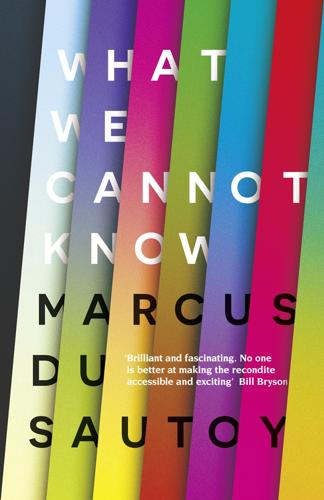
What We Cannot Know: Explorations at the Edge of Knowledge
by
Marcus Du Sautoy
Published 18 May 2016
Source ISBN: 9780007576661 Ebook Edition © May 2016 ISBN: 9780007576579 Version: 2016-04-21 Dedication To my parents, who started me on my journey to the edges of knowledge CONTENTS Cover Title Page Copyright Dedication Edge Zero: The Known Unknowns First Edge: The Casino Dice Chapter 1 Chapter 2 Second Edge: The Cello Chapter 3 Chapter 4 Third Edge: The Pot of Uranium Chapter 5 Chapter 6 Fourth Edge: The Cut-Out Universe Chapter 7 Chapter 8 Fifth Edge: The Wristwatch Chapter 9 Chapter 10 Sixth Edge: The Chatbot App Chapter 11 Chapter 12 Seventh Edge: The Christmas Cracker Chapter 13 Chapter 14 Further Reading Index Acknowledgements Illustration Credits Also by Marcus du Sautoy About the Publisher EDGE ZERO: The Known Unknowns Everyone by nature desires to know.
…
One of the dangers when faced with currently unanswerable problems is to give in too early to their unknowability. But if there are unanswerables, what status do they have? Can you choose from the possible answers and it won’t really matter which one you opt for? Talk of known unknowns is not reserved to the world of science. The US politician Donald Rumsfeld strayed into the philosophy of knowledge with the famous declaration: There are known knowns; there are things that we know that we know. We also know there are known unknowns; that is to say, we know there are some things we do not know. But there are also unknown unknowns, the ones we don’t know we don’t know. Rumsfeld received a lot of stick for this cryptic response to a question fired at him during a briefing at the Department of Defense about the lack of evidence connecting the government of Iraq with weapons of mass destruction.
…
For Kelvin it was relativity and quantum physics that turned out to be the unknown unknown that he was unable to conceive of. So in this book I can at best try to articulate the known unknowns and ask whether any will remain forever unknown. Are there questions that by their very nature will always be unanswerable, regardless of progress in knowledge? I have called these unknowns ‘Edges’. They represent the horizon beyond which we cannot see. My journey to the Edges of knowledge to articulate the known unknowns will pass through the known knowns that demonstrate how we have travelled beyond what we previously thought were the limits of knowledge.

Super Thinking: The Big Book of Mental Models
by
Gabriel Weinberg
and
Lauren McCann
Published 17 Jun 2019
Because there are reports that there is no evidence of a direct link between Baghdad and some of these terrorist organizations. Rumsfeld: Reports that say that something hasn’t happened are always interesting to me, because as we know, there are known knowns; there are things we know we know. We also know there are known unknowns; that is to say we know there are some things we do not know. But there are also unknown unknowns—the ones we don’t know we don’t know. And if one looks throughout the history of our country and other free countries, it is the latter category that tend to be the difficult ones. The context and evasiveness of the exchange aside, the underlying model is useful in decision making.
…
When faced with a decision, you can use a handy 2 × 2 matrix (see Chapter 4) as a starting point to envision these four categories of things you know and don’t know. Knowns & Unknowns Known Unknown Known What you know you know What you know you don’t know Unkown What you don’t know you know What you don’t know you don’t know This model is particularly effective when thinking more systematically about risks, such as risks to a project’s success.
…
Each category deserves its own attention and process: Known knowns: These might be risks to someone else, but not to you since you already know how to deal with them based on your previous experience. For example, a project might require a technological solution, but you already know what that solution is and how to implement it; you just need to execute that known plan. Known unknowns: These are also known risks to the project, but because of some uncertainty, it isn’t exactly clear how they will be resolved. An example is the risk of relying on a third party: until you engage with them directly, it is unknown how they will react. You can turn some of these into known knowns by doing de-risking exercises (see Chapter 1), getting rid of the uncertainty.
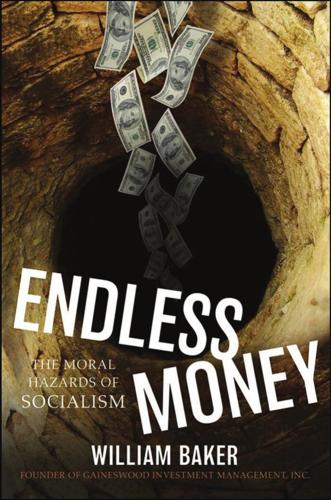
Endless Money: The Moral Hazards of Socialism
by
William Baker
and
Addison Wiggin
Published 2 Nov 2009
In this way Wall Street has inventively adapted to the threat raised by passive management, the case for which seemed airtight once the efficient market theorists were given their due. What is it about human nature that we value the present so highly, but we lose sight of the big picture? Unknown Unknowns 15 Unknown Unknowns There are known knowns. There are things we know that we know. There are known unknowns. That is to say, there are things that we know we now know we don’t know. But there are also unknown unknowns. There are things we do not know we don’t know. Donald Rumsfeld, statement from Defense Department briefing, 200210 In his bestseller, The Black Swan, the financial commentator Nassim Taleb claims that investors and economists err in understanding the direction of markets because they underestimate what they do not know, a concept he names “tunneling.”
…
But it has produced a market full of capital awarded to funds based upon historical trends, which are subject to dramatic realignment, particularly in light of what may be a generational 29 Wings of Wax economic episode that may result in the realignment of trade between nations, the bankruptcy of major global entities, or even entire countries and their currencies, Iceland being the first to fall. Market participants can only seek to hedge against perceived risk, or known unknowns. When many stand on the same side of the boat in the belief that they are protected by the latest technology, the iceberg below the surface has a tendency to create a Titanic moment. The Greatest Risk To combust, a fire requires three conditions: fuel, oxygen, and heat. Derivatives and evidence-based investing are not enough to cause a financial meltdown.
…
The Russian attack upon Georgia in 2008, although initially shrugged off by financial and commodity markets as inconsequential, may embolden this former enemy and signal the restart of another Cold War. Foreign policy has thus shifted from being an “unknown unknown,” as Rumsfeld would say, to being a “known unknown.” With an intelligence service that is not hamstrung by conferring Constitutional rights to alien combatants, from rights to trials in the U.S. justice system to blocking the monitoring of phone calls between aliens on foreign soil, less would be unknown. Human intelligence, which is essential in the fight against terrorism, was decimated first by the Church Committee in 1975, the application of the Torricelli Principle (1995), and President Clinton’s Directive 35.
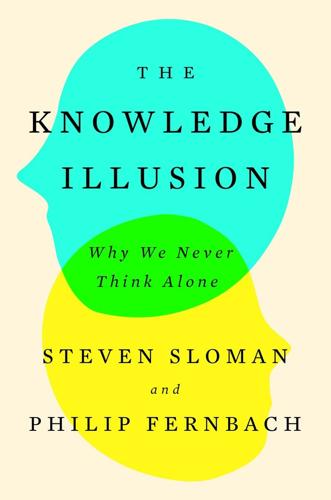
The Knowledge Illusion
by
Steven Sloman
Published 10 Feb 2017
Donald Rumsfeld was the U.S. secretary of defense under both presidents Gerald Ford and George W. Bush. One of his claims to fame was to distinguish different kinds of not knowing: There are known knowns. These are things we know that we know. There are known unknowns. That is to say, there are things that we know we don’t know. But there are also unknown unknowns. There are things we don’t know we don’t know. Known unknowns can be handled. It might be hard, but at least it is clear what to prepare for. If the military knows an attack is coming but doesn’t know where or when, then they can put their reserves on notice, prepare their weaponry, and make everything as mobile as they can.
…
See also technology investment game example, 138–39 and people’s cognitive self-esteem, 136–39 search study, 137 team effect of an individual’s online research, 137–38 WebMD diagnosis study, 138–39 interpersonal relationships and causal reasoning, 57–58, 75 interviewing example of intelligence, 201 intuition vs. deliberation, 75–84 anagram example, 76–77 Aristotle, 77 chakras, 79–80 CRT (Cognitive Reflection Test), 80–84 Frederick, Shane, 80–82 passion and reason, 78–79 Plato, 78 the power of thinking as a community, 80, 200 the reflective response, 81–84, 238 inverted text example of familiarity and illusion of comprehension, 217 investment game example of the Internet and people’s sense of understanding, 138–39 Iranian attitudes about nuclear capabilities as example of sacred values, 185–86 Israeli-Palestinian conflict example of values vs. consequences arguments, 186–87 Jane Doe example of the role of the community of knowledge in science, 224–25 Janis, Irving, 173 jellyfish, sophistication of a, 42 Julie and Mark example of moral dumbfounding, 181–82 Kahan, Dan, 160 Kahneman, Daniel, 76 kayak example of long-term planning and causal reasoning, 56–57 Keil, Frank, 20–23, 21–24, 137 Kennedy, John F., 263 King, Martin Luther, Jr., 195–97, 214 knowledge accessibility of, 13–14, 123–25, 127–28 author’s daughters example, 261–62, 264–65 calibrated, being, 262 collaboration, 14, 17, 115–16 community of, 80, 200, 206–14, 221, 223–27 compatibility of different group members’, 126 cumulative culture, 117–18 curse of, 128 estimating, 24–26 false information, spreading, 231–32 flying as an example of shared knowledge, 18 geology article example, 123–24 groupthink, 173–75 hive mind collaboration, 5–6, 128, 244–46 illusion, 127–29, 262–65 interdependence of, 226 “known unknowns,” 32, 173 lack of depth, individuals’, 9–10, 73–74, 127, 163–64, 257–58 medical information example, 125 placeholders, 125–26 and skills, 258 Sphinx example, 125–26 understanding science and technology, 156–59, 162–64, 169–70, 221–28 “unknown unknowns,” 32–33 “known unknowns,” 32, 173 Kurzweil, Ray, 132 Landauer, Thomas, 24–26 language, 113–14 lateral inhibition, 43–45 Lawson, Rebecca, 23–24 leaders, qualities of strong, 192–93 learning to accept what you don’t know, 220–21, 223–24 communal, 228–31 expressing desire to learn that which is unknown, 221 one’s place within a community of knowledge, 220–21 lessons for making good decisions gathering information to increase understanding, 252–53 just-in-time education, 251–52 reducing complexity, 250 simple decision rules, 250–51 libertarian paternalism, 247–49 food choices example, 248–49 nudges, behavioral, 248–49 opting out instead of opting in, 249 organ donation example, 248–49 Liersch, Michael, 235 lily pad problem from Cognitive Reflection Test, 81–82 Limulus polyphemus (horseshoe crabs), 42–45 linear vs. nonlinear change, 234–37 lithium-7, 2–3 logic affirmation of the consequent, 54–55 causal, 56 inferences, 55–56 propositional, 54–56 long-term planning and causal reasoning, 56–57 Ludd, Ned, 153–54 Luddites, 153–54 Lynch, John G., Jr., 251–52 machine intelligence.
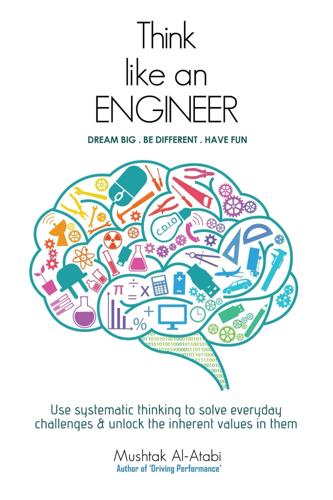
Think Like an Engineer: Use Systematic Thinking to Solve Everyday Challenges & Unlock the Inherent Values in Them
by
Mushtak Al-Atabi
Published 26 Aug 2014
We do not want to roll out the new technology nationwide at a huge cost just to realise that correcting it is going to affect the viability of the bank. 12.3 Failure, Risk and Uncertainty Donald Rumsfeld, US secretary of defence during the US invasion of Iraq, said that there are two kinds of unknowns, known unknowns and unknown unknowns. Known unknowns are events for which we know their probability of happening; for example, we know how many people die of heart-related diseases each year in a certain population group. When the known unknowns are negative in consequences, they are called risk. There are data available on the probability of the success of new business ventures, such as restaurants. So anyone who wishes to open a new restaurant should know that only 10% of new restaurants survive and make money.
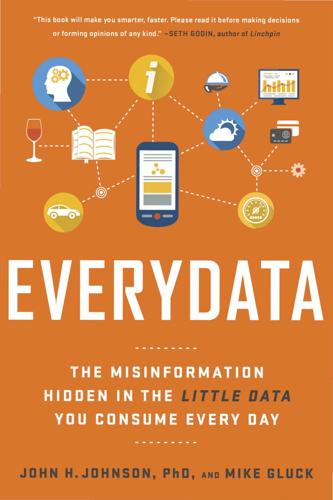
Everydata: The Misinformation Hidden in the Little Data You Consume Every Day
by
John H. Johnson
Published 27 Apr 2016
On February 12, 2002, Rumsfeld (former U.S. secretary of defense) appeared at a U.S. Department of Defense briefing and said: “There are known knowns; there are things we know we know. We also know there are known unknowns; that is to say, we know there are some things we do not know. But there are also unknown unknowns—the ones we don’t know we don’t know.” On Rumsfeld’s website (http://papers.rumsfeld.com/about/page/authors-note), he says he “first heard a variant of the phrase ‘known unknowns’ in a discussion with former NASA administrator William R. Graham, when we served together on the Ballistic Missile Threat Commission in the late 1990s.” 27.
…
And that’s okay. You don’t have to know every confidence interval of every study you read about. But you should know that they exist, what they mean, and how they influence the data you consume every day. Or, in the words of Donald Rumsfeld, you want to distinguish between “unknown unknowns” and “known unknowns.”26 Of course, media interpretation of data is a different issue from original scientific studies that may have false findings. In a paper titled “Why Most Published Research Findings Are False,” John Ioannidis wrote, “There is increasing concern that in modern research, false findings may be the majority or even the vast majority of published research claims.”27 As Science News put it, “if you believe what you read in the scientific literature, you shouldn’t believe what you read in the scientific literature.”28 We’re not sure about Ioannidis’s claims about the “majority” of published claims being false, but we’ve certainly seen dozens—if not hundreds—of published studies that had notable concerns regarding statistical significance.
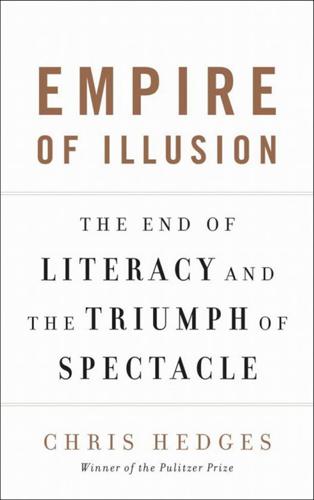
Empire of Illusion: The End of Literacy and the Triumph of Spectacle
by
Chris Hedges
Published 12 Jul 2009
And if the president can declare American citizens living inside the United States to be enemy combatants and order them stripped of constitutional rights, which he effectively can under this authorization, what does this mean for us? How long can we be held without charge? Without lawyers? Without access to the outside world? The specter of social unrest was raised at the Strategic Studies Institute of the U.S. Army War College in November 2008, in a monograph by Nathan Freier titled Known Unknowns: Unconventional “Strategic Shocks” in Defense Strategy Development. The military must be prepared, Freier warned, for a “violent, strategic dislocation inside the United States” that could be provoked by “unforeseen economic collapse,” “purposeful domestic resistance,” “pervasive public health emergencies,” or “loss of functioning political and legal order.”
…
Blair, “Far-Reaching Impact of Global Economic Crisis,” Annual Threat Assessment, Senate Armed Services Committee (March 10, 2009), 3. http://www.fas.org/irp/congress/2009_hr/031009blair.pdf. 10 Quoted in James Bamford, “Big Brother Is Listening,” Atlantic (April 2006), http://www.theatlantic.com/doc/200604/nsa-surveillance/4. 11 Nathan Frier, “Known Unknowns: Unconventional ‘Strategic Shocks’ in Defense Strategy Development,” U.S. Army War College, Strategic Studies Institute, http://www.strategicstudiesinstitute.army.mil/pdffiles/PUB890.pdf. 12 George Orwell, The Collected Letters, Essays and Journalism of George Orwell. Vol, 4: In Front of Your Nose, 1945-1950.
…
Kamata, Satoshi Kane (wrestler) Kant, Immanuel Keller, Bronwen Keltner, Dacher Kenci (porn actress) Kennedy, John F. Kerbel, Jarrett Kerry, John Khomeini, Ayatollah Khosrow Ali Vaziri, Hossein (Iron Sheik) Klein, Naomi Knowledge Is Power Program (KIPP) schools Known Unknowns: Unconventional “Strategic Shocks” in Defense Strategy Development (Freier) Korten, David Kristy (The Swan contestant) Krypton, Roger Ku Klux Klan Kucinich, Dennis LA Weekly (newspaper) Labor unions LaFarge, Peter Lahde, Andrew Landay, Jonathan Lane, Robert Lane, Sunny Las Vegas, Nevada described porn expo in Lasch, Christopher The Last Honest Place in America (Cooper) The Last Professors: The Corporate University and the Fate of the Humanities (Donoghue) Law, John Lawrence Berkeley National Laboratory Layfield, John Bradshaw (JBL) Lazarus, Richard S.
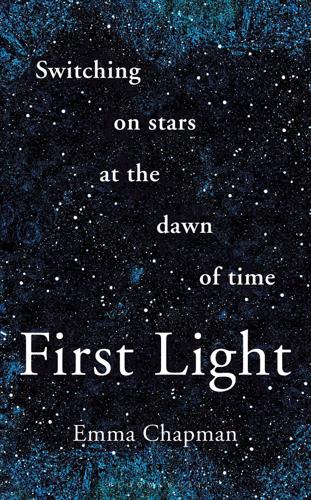
First Light: Switching on Stars at the Dawn of Time
by
Emma Chapman
Published 23 Feb 2021
Radio emission escaping from microwave ovens during the magnetron shut-down phase neatly explains all the observed properties of the peryton signals.’3 Whoops. They hadn’t discovered a new astrophysical entity after all. Someone next door had just got hungry while the telescope was taking data. Anything can happen with unknown unknowns! The known unknowns We have managed to cover a lot of the known knowns and known unknowns. We have followed the many paths of the first light, whether it came from stars, black holes or galaxies. Simulations have become so advanced that we can now follow the births of individual stars in a fragmenting gas cloud, and follow whole families as they form, merge, fly out or explode.
…
Early on in my career the most I had been paid for a public lecture was a doughnut, and grateful I was for that too. 2 A £1,000 reward from the Air Ministry for anyone who could kill a sheep at a distance of 100 yards went unclaimed. 3 Always antennas, never antennae. The latter belong to an insect. 4 A petabyte is equivalent to about 2000 years worth of MP3 songs. CHAPTER ELEVEN Unknown Unknowns In science there are the known knowns (those that you already know), the known unknowns (those that you are aware of), and the unknown unknowns (those that you didn’t even see coming). The data rates of modern telescopes are torrential, and real-time searching of that data for anomalies is near impossible. But if we can store the data and then review it later, sometimes surprises pop out.
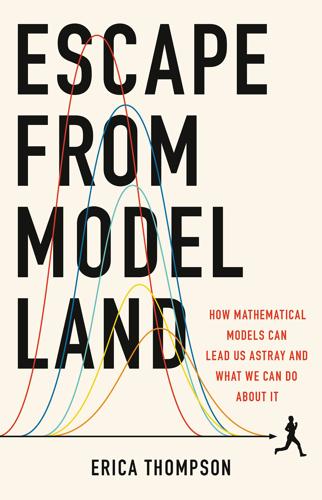
Escape From Model Land: How Mathematical Models Can Lead Us Astray and What We Can Do About It
by
Erica Thompson
Published 6 Dec 2022
The subjectivity of that second escape route may still worry you. It should. There are many ways in which our judgement, however expert, could turn out to be inadequate or simply wrong. As Donald Rumsfeld, former US secretary of defense, put it: there are ‘known unknowns’ and there are ‘unknown unknowns’. If the known knowns are things that we can model, and the known unknowns are things that we can subjectively anticipate, there will always be unknown unknowns lurking in the darkness beyond the sphere of our knowledge and experience. But how else can we account for them? By definition, we cannot infer them from the data we have, and yet we must still make decisions.
…
These are common concerns. Winsberg answers his own rhetorical questions, however, in the final paragraphs of the book itself, where he notes the possibility of abrupt and disruptive changes that are not modelled adequately and that could happen over a very short period of time. In failing to model ‘known unknowns’ like methane release or ecosystem collapse, climate modellers are indeed writing a zero-order polynomial when we know for sure that the truth is something more complex. We know what the timescale of applicability for weather models is: a few days to weeks, determined by the timescale on which we find major divergence in the range of forecasts.

Nerds on Wall Street: Math, Machines and Wired Markets
by
David J. Leinweber
Published 31 Dec 2008
However, if one makes the simplifying assumption that all events are either “scheduled” or “unanticipated,” then one concludes that optimal execution is always a game of static trading punctuated by shifts in trading strategy that adapt to material changes in price dynamics. (p. 5) This is a Ph.D.-ified version of the wisdom of two-time Secretary of Defense Donald Rumsfeld that there are “known unknowns and unknown unknowns.” 78 Nerds on Wall Str eet Examples of known unknowns include scheduled announcements that affect particular stocks, like earnings releases or conference calls; announcements that affect groups of stocks, like housing starts; and announcements that affect broad markets, like macroeconomic data and interest rates.
…
CONTENTS Foreword by Ted Aronson Acknowledgments Introduction xi xiii xv Part One Wired Markets 1 Chapter 1: An Illustrated History of Wired Markets 5 Chapter 2: Greatest Hits of Computation in Finance 31 Financial Technology Stars; Hits and Misses; The Crackpot as Billionaire; Future Technological Stars; Mining the Deep Web; Language Technology; EDGAR; Greatest Hits, and the Mother of All Greatest Misses Chapter 3: Algorithm Wars 65 Early Algos; Algos for Alpha; Algos for the Buy Side; From Order Pad to Algos; A Scientific Approach; Job Insecurity for Traders; So Many Markets, So Little Time; Known Unknowns and Unknown Unknowns; Models Aren’t Markets; Robots, RoboTraders, and Traders; Markets in 2015, Focus on Risk; Playing Well with Robots and Algorithms; Seeing the Big Picture in Markets; Agents for News and Pre-News; Algorithms at the Edge Part Two Alpha as Life 89 Chapter 4: Where Does Alpha Come From?
…
Source: Robert Almgren and Neil Chriss, “Optimal Execution of Portfolio Transactions,” Journal of Risk 3, no. 2 (Winter 2000/2001). 10 Share Holdings 8 C B 6 4 A 2 0 0 1 2 3 Time Periods 77 4 5 Mathematical models of markets can become very elaborate. Game theoretic approaches to other market participants, human and machine, in the spirit of the Beautiful Mind ideas of John Nash, bring another level of insight. Known Unknowns and Unknown Unknowns Almgren and Chriss close with an important point about the limitations of all model-driven strategies. As part of the Algos 201 track, here is what they say about connecting algorithms to real-world events: Finally, we note that any optimal execution strategy is vulnerable to unanticipated events.

Think Like a Rocket Scientist: Simple Strategies You Can Use to Make Giant Leaps in Work and Life
by
Ozan Varol
Published 13 Apr 2020
Our ability to make the most out of uncertainty is what creates the most potential value. We should be fueled not by a desire for a quick catharsis but by intrigue. Where certainty ends, progress begins. Our obsession with certainty has another side effect. It distorts our vision through a set of funhouse mirrors called unknown knowns. Unknown Knowns On February 12, 2002, amid escalating tensions between the United States and Iraq, US secretary of defense Donald Rumsfeld took the stage at a press briefing. He received a question from a reporter about whether there was any evidence of Iraqi weapons of mass destruction—the basis for the subsequent American invasion.
…
A typical answer would be packaged in preapproved political stock phrases like ongoing investigation and national security. But Rumsfeld instead pulled out a rocket-science metaphor from his linguistic grab bag: “There are known knowns; there are things we know we know. We also know there are known unknowns; that is to say we know there are some things we do not know. But there are also unknown unknowns—the ones we don’t know we don’t know.”16 These remarks were widely ridiculed—in part because of their controversial source—but as far as political statements go, they’re surprisingly accurate. In his autobiography, Known and Unknown, Rumsfeld acknowledges that he first heard the terms from NASA administrator William Graham.17 But Rumsfeld conspicuously omitted one category from his speech—unknown knowns.
…
Determining what to be alarmed about requires following the timeless wisdom of Yoda: “Named must your fear be before banish it you can.”72 The naming, I’ve found, must be done in writing—with paper and pencil (or pen, if you’re into technology). Ask yourself, What’s the worst-case scenario? And how likely is that scenario, given what I know? Writing down your concerns and uncertainties—what you know and what you don’t know—undresses them. Once you lift up the curtain and turn the unknown unknowns into known unknowns, you defang them. After you see your fears with their masks off, you’ll find that the feeling of uncertainty is often far worse than what you fear. You’ll also realize that in all likelihood, the things that matter most to you will still be there, no matter what happens. And don’t forget the upside.

How to Speak Money: What the Money People Say--And What It Really Means
by
John Lanchester
Published 5 Oct 2014
Since this would obviously involve large population displacements, and probably the total breakdown of order, not just in the cities affected but all around them, this study is in effect predicting the end of life as we know it, sometime this decade. Let’s hope the Hawaii team is wrong; but for sure this counts as a “known unknown.” A third “known unknown” is that the world is likely to look more and more like a genuinely multipolar place. For a long time we lived with two superpowers, then with one; now there will be several sources of global power and influence. We haven’t had a world that looks like that for a long time, and it is likely to have many surprising features.
…
This one isn’t going away, anywhere—and that in itself is a strange and new thing, because we face the prospect of a world in which, arguably for the first time, every political dispensation, from Communist China to mixed-economy India to free-market America to the resource producers of South America to the welfare state capitalist societies of northern Europe, everybody, is for the first time, arguing about the same issue. In Beijng or Rio, Sydney or Paris, New York or London, it’s about the inequality, stupid. So where do we go from here? The two biggest “known unknowns” are those of inequality and crises in relation to resources. We simply can’t know how these issues are going to play out over the next few years, even though we can be sure that the subjects are going to be at the top of the global agenda. I think there we’re likely to see a gradually increasing distinction between the developed and the emerging worlds, in terms of their attitudes to wealth and in particular to public displays of wealth and conspicuous consumption.
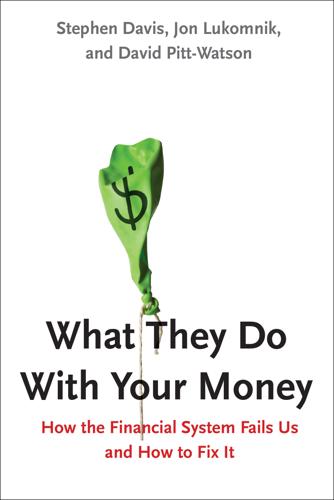
What They Do With Your Money: How the Financial System Fails Us, and How to Fix It
by
Stephen Davis
,
Jon Lukomnik
and
David Pitt-Watson
Published 30 Apr 2016
But if the economic model gives a narrow view of the world, the risk model does a poor job predicting how it functions. This happens for two reasons. The first has to do with the difference between risk and uncertainty. Donald Rumsfeld, the former US defense secretary, made this distinction when he talked about “known unknowns” and “unknown unknowns.”34 We might think of known unknowns as representing risk. If we throw a pair of dice, we don’t know what the outcome will be, but we know that it will be between two and twelve and that each outcome will come up a predictable percentage of times. But some outcomes cannot be predicted, even probabilistically.
…
They find that the key factors were association with US banks, the simple leverage ratio of the bank, and the fragility of its financing—that is, the likelihood that lenders will withdraw funds. They point out that the fundamental problem with Basel III is that it aims to control the wrong thing. It focuses on risk, that is, the “known unknowns” for each bank, rather than uncertainty, that is, “unknown unknowns” for the system as a whole. R. A Brealey, I. Cooper and E. Kaplanis, “International Propagation of the Credit Crisis: Implications for Bank Regulation,” Journal of Applied Corporate Finance 24, no. 4 (2012): 36–45. 3. Haldane, “The Dog and the Frisbee.” 4.

The Innovation Illusion: How So Little Is Created by So Many Working So Hard
by
Fredrik Erixon
and
Bjorn Weigel
Published 3 Oct 2016
In a world where a greater part of equity- and debt-holding follows such a formula, and where market and regulatory trends lead to far greater homogenization of investor behavior, the general profile of corporate ownership gradually comes to reflect broad macro trends and issues around systemic risks rather than the actual merits of a company and its future.5 So let us go back to the riddle: if no one knows who owns a company, no one knows what concerns the investors and why they have invested. It follows that no one will know if a company is following the wishes of the owners or not, or whether the interests of owners and companies are aligned. As a consequence, no one really knows whom the management serves. Do you see where this is going? It is an ownership structure based on known unknowns. That is what makes capitalism betwixt – and gray. Add to this the global linkages of dispersed ownership. The global ownership of companies forms a connecting structure resembling a spider’s web, where the ultimate ownership rests with a small number of financial companies, or spiders. In a study of global concentration of ownership, penetrating into the ownership of as many as 37 million global companies, including financial companies and investors, it turned out that only 147 firms control about 40 percent of all corporate assets.6 When this group of spiders was expanded to include 737 companies, together they were shown to control 80 percent of assets.
…
The paradox is that what is good for the individual saver is not good for economies, at least not in the long run as gray capital plays an increasing part in the total financial economy. Gray capital, then, creates a capitalist economy where ownership is based predominantly on indirect ownership, or known unknowns. It promotes ownership without capitalist characteristics, and is increasingly dependent on gray-haired people, often investing their savings like a rentier. Prospecting for capitalists: meet the owners A few years ago one of the British tabloids ran a story about what is perhaps a usual sight on London’s streets, but which nevertheless caught people’s attention.
…
They affect innovation because they compel companies to innovate in a way that pleases an increasingly risk-averse and precautionary society. They have created a permission-based culture of innovation. Regulation is not neutral between existing and future products: it places a wedge between efforts to improve on current products and putting vastly different products and services on the market. Regulation has become a known unknown – and, by extension, a disruptive force in the innovation process. Business has responded predictably, either cutting down on innovation expenditure or reallocating it in a way that fits with new regulatory demands. Complex regulation has reinforced the growth of the managerialist mentality in corporate management – and suppressed the appetite for radical innovation.
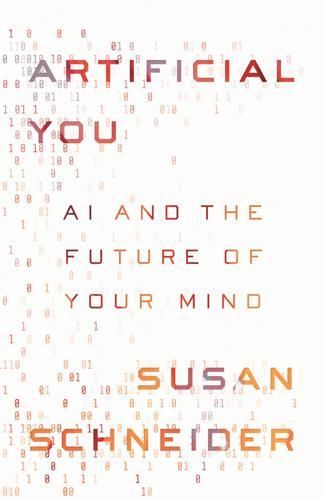
Artificial You: AI and the Future of Your Mind
by
Susan Schneider
Published 1 Oct 2019
No book written today could accurately predict the contours of mind-design space, and the underlying philosophical mysteries may not diminish as our scientific knowledge and technological prowess increase. It pays to keep in mind two important ways in which the future is opaque. First, there are known unknowns. We cannot be certain when the use of quantum computing will be commonplace, for instance. We cannot tell whether and how certain AI-based technologies will be regulated, or whether existing AI safety measures will be effective. Nor are there easy, uncontroversial answers to the philosophical questions that we’ll be discussing in this book, I believe.
…
Nor are there easy, uncontroversial answers to the philosophical questions that we’ll be discussing in this book, I believe. But then there are the unknown unknowns—future events, such as political changes, technological innovations, or scientific breakthroughs that catch us entirely off guard. In the next chapters, we turn to one of the great known unknowns: the puzzle of conscious experience. We will appreciate how this puzzle arises in the human case, and then we will ask: How can we even recognize consciousness in beings that may be vastly intellectually different from us and may even be made of different substrates? A good place to begin is by simply appreciating the depth of the issue.
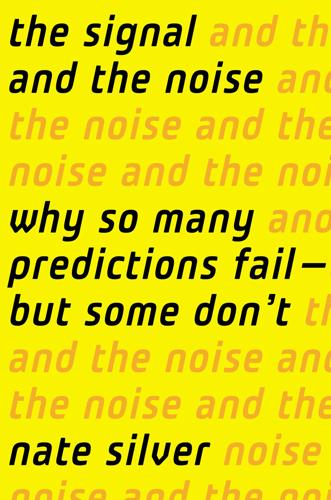
The Signal and the Noise: Why So Many Predictions Fail-But Some Don't
by
Nate Silver
Published 31 Aug 2012
In medicine this is called anosognosia:20 part of the physiology of the condition prevents a patient from recognizing that they have the condition. Some Alzheimer’s patients present in this way. The predictive version of this syndrome requires us to do one of the things that goes most against our nature: admit to what we do not know. Was 9/11 a Known Unknown? [T]here are known knowns; there are things we know we know. We also know there are known unknowns; that is to say we know there are some things we do not know. But there are also unknown unknowns—there are things we do not know we don’t know.—Donald Rumsfeld21 Rumsfeld’s famous line about “unknown unknowns,” delivered in a 2002 press conference in response to a reporter’s question about the presence of weapons of mass destruction in Iraq, is a corollary to Schelling’s concern about mistaking the unfamiliar for the unlikely.
…
—Donald Rumsfeld21 Rumsfeld’s famous line about “unknown unknowns,” delivered in a 2002 press conference in response to a reporter’s question about the presence of weapons of mass destruction in Iraq, is a corollary to Schelling’s concern about mistaking the unfamiliar for the unlikely. If we ask ourselves a question and can come up with an exact answer, that is a known known. If we ask ourselves a question and can’t come up with a very precise answer, that is a known unknown. An unknown unknown is when we haven’t really thought to ask the question in the first place. “They are gaps in our knowledge, but gaps that we don’t know exist,” Rumsfeld writes in his 2011 memoir.22 The concept of the unknown unknown is sometimes misunderstood. It’s common to see the term employed in formulations like this, to refer to a fairly specific (but hard-to-predict) threat: Nigeria is a good bet for a crisis in the not-too-distant future—an unknown unknown that poses the most profound implications for US and global security [emphasis added].23 This particular prophecy about the terrorist threat posed by Nigeria was rather prescient (it was written in 2006, three years before the Nigerian national Umar Farouk Abdulmutallab tried to detonate explosives hidden in his underwear while aboard a flight from Amsterdam to Detroit).
…
It’s common to see the term employed in formulations like this, to refer to a fairly specific (but hard-to-predict) threat: Nigeria is a good bet for a crisis in the not-too-distant future—an unknown unknown that poses the most profound implications for US and global security [emphasis added].23 This particular prophecy about the terrorist threat posed by Nigeria was rather prescient (it was written in 2006, three years before the Nigerian national Umar Farouk Abdulmutallab tried to detonate explosives hidden in his underwear while aboard a flight from Amsterdam to Detroit). However, it got the semantics wrong. Anytime you are able to enumerate a dangerous or unpredictable element, you are expressing a known unknown. To articulate what you don’t know is a mark of progress. Few things, as we have found, fall squarely into the binary categories of the predictable and the unpredictable. Even if you don’t know to predict something with 100 percent certainty, you may be able to come up with an estimate or a forecast of the threat.
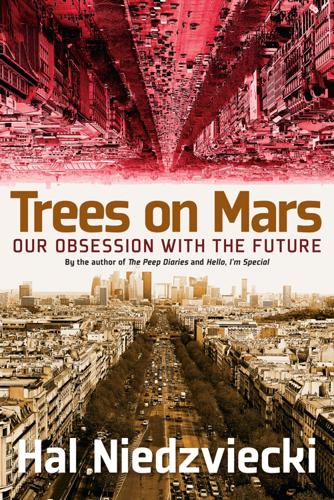
Trees on Mars: Our Obsession With the Future
by
Hal Niedzviecki
Published 15 Mar 2015
Thus, for the Amondawa and the majority who have walked the earth since the beginning of humanity, there was only the now and the realization that the now was, in some hazy way, related to what had happened and what was almost-about-to happen which were, nevertheless, all the same thing. We lived within and for and through the present day—allowing the reality of its known unknown into our everyday lives the same way we integrated the rituals and patterns of gathering food or mourning the dead into the story we told each other, the ongoing story that made sense of how the tribe lived and survived. In this way, “people,” theorized Marshall McLuhan, “were drawn together into a tribal mesh” and partook of “the collective unconscious.”
…
There could be “a certain script of language,” speculated Gottfried Wilhelm Leibniz in 1678, “that perfectly represents the relationships between our thoughts.”15 The seventeenth-century German philosopher and mathematician Leibniz put his faith in a language of pure reason—the language that would allow us to symbolize all disagreement, all controversy, all known unknowns through the pure intractable truth of logic. He spoke of using this mathematical language to “work out by an infallible calculus, the doctrines most useful for life, that is, those of morality and metaphysics.”16 Leibniz invented calculus and even, in 1679, “imagined a digital computer in which binary numbers were represented by spherical tokens, governed by gates under mechanical control.”17 He laid the groundwork for the information-based computer revolution to come.
…
It’s a device that tells us what just happened to our brain in order to help us control what’s going to happen next in our brain. But for many of us, even those of us actively involved in pursuing future and transferring more and more of life into captured information, in some hidden part of the brain, a plate is still a circle and death is still the known unknown to be feared and placated. The old modes linger. We have not yet, and may never, end our longstanding relationship to the magic that once overshadowed almost everything in human life. The process is slow and confusing. “Man the food-gatherer reappears incongruously as information-gatherer,” remarked Marshall McLuhan in 1967.
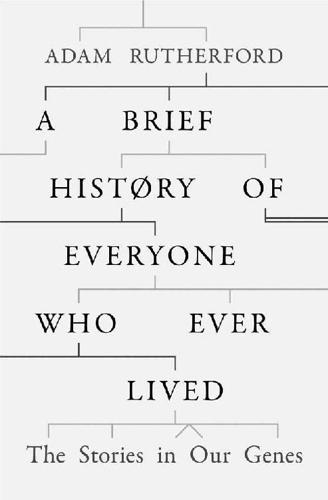
A Brief History of Everyone Who Ever Lived
by
Adam Rutherford
Published 7 Sep 2016
When talking about this era, Birney invokes a much-maligned sentiment expressed by an unlikely accidental philosopher: Donald Rumsfeld. In February 2002, the then US Secretary of State said this about the existence (or otherwise) of weapons of mass destruction in the second Iraq War: . . . as we know, there are known knowns; there are things we know we know. We also know there are known unknowns; that is to say we know there are some things we do not know. But there are also unknown unknowns – the ones we don’t know we don’t know. Nestled deep in all that wretched inelegance is great wisdom. The range and error of the betting book showed how clearly human genetics was set in the zone of unknown unknowns until the twenty-first century.
…
We estimate based on the number and density of connections between the neurons in our skulls that the brains you and I are using right now are the most complex objects in the known universe. Yet the code that underwrites that spectacular lump of grey meat is basically the same as animals that can do none of this. The greatest achievement of the Human Genome Project was working out exactly how little we knew – known unknowns. Once you know what you need to know, the future is laid out in front of you. And so, the map was sketched, and the landscape was set out – where to explore, and what we might be hunting for. If the paucity of genes was the first great revelation of the Human Genome Project, the second was that almost all the genome is not genes at all.
…
Metaphors in science should clarify or enlighten, not obfuscate because they sound profound. To me, it is using one thing we don’t understand to explain another, and thus has no explicatory power itself. Instead it merely reinforces the mystery, as if it were not simply a scientific problem of known unknowns, but something mystical. We have no room for the mystical in science. All these bits and bobs of genetic switches, scaffold, detritus, and mystery make up almost all of the genome. The Human Genome Project wasn’t easy, and took the best part of a decade, the invention of brand new technologies, unprecedented computing power and $3 billion.
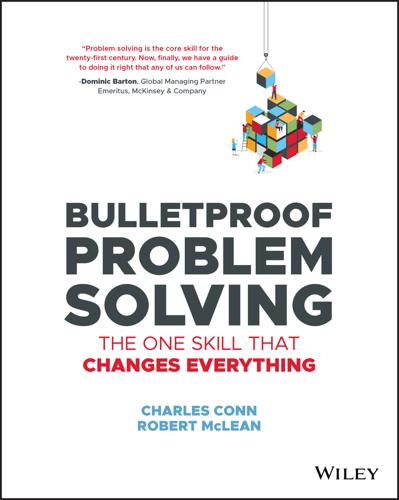
Bulletproof Problem Solving
by
Charles Conn
and
Robert McLean
Published 6 Mar 2019
In an update of “Strategy Under Uncertainty,” author Hugh Courtney gave the example of early‐stage biotech investments having Level 4 uncertainty.2 Level 5 is the nearly absolute uncertainty of events that are unpredictable with current knowledge and technology, sometimes called unknown unknowns. Uncertainty levels 1 through 4 are colorfully called “the known unknowns,” in contrast to level 5. We don't put them in a too‐hard basket. Instead we approach them recognizing and quantifying the level and type of uncertainty, and then develop approaches to move toward our desired outcomes by managing the levers that we control. The next and harder step is to identify what actions you can take to deal with a particular level of uncertainty.
…
See Independent science review Issues disaggregation, 5 prioritization, 5 J Jefferson, Thomas, 69 Johnson & Johnson (J&J), staircase/associated capability platform, 221e Judgment in Managerial Decision Making (Bazerman/Moore), 216 K Kaggle, 164–166 Kahneman, Daniel, 99, 101, 107, 123 Keeney, R., 73 Kenny, Thomas, 213 King, Abby C., 143 Kirkland, Jane, 199 Knee arthroscopy, election (question), 125e Knezevic, Bogdan, 143 Knock‐out analysis, 92–93 Known unknowns, 198 Koller, Tim, 214 Komm, Asmus, xvii L Labor market, 205e Leadership, team structure (relationship), 97–98 Lean project plans, 93, 94e Learning algorithms, 159 Leskovec, Jure, 143 Levels of uncertainty, 197–198 Levers impact, 65e profit lever tree, 23e strategies, 66 Lewis, Michael, 201 LIDAR, usage, 226 Linear regression, 159–160 Local school levy support (case study), 25–28 problem, 26 sample, 28e Logic trees, 14e, 127, 180 deductive logic trees, 58–59, 67 disaggregation, map basis, 232 inductive logic trees, 67–68 reduction, 71–73 sketching, 255 types, 51–53, 52e usage, 199–202 Logic, usage, 7 London air quality, case study, 141, 142e Longevity runway estimation, 209 sketching, 210–211 Long term.
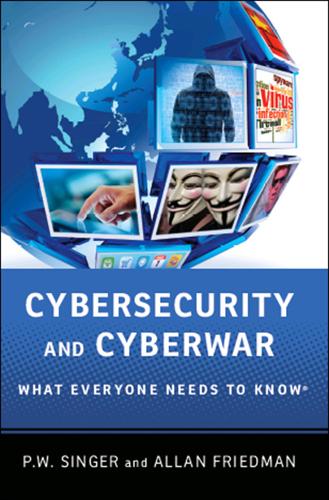
Cybersecurity: What Everyone Needs to Know
by
P. W. Singer
and
Allan Friedman
Published 3 Jan 2014
WeMo switched the fan on Clive Thompson, “No Longer Vaporware: The Internet of Things Is Finally Talking,” Wired, December 6, 2012, http://www.wired.com/opinion/2012/12/20-12-st_thompson/. WHAT DO I REALLY NEED TO KNOW IN THE END? Donald Rumsfeld Charles M. Blow, “Knowns, Unknowns, and Unknowables,” New York Times, September 26, 2012, http://campaignstops.blogs.nytimes.com/2012/09/26/blow-knowns-unknowns-and-unknowables/. GLOSSARY advanced persistent threat (APT): A cyberattack campaign with specific, targeted objectives, conducted by a coordinated team of specialized experts, combining organization, intelligence, complexity, and patience.
…
Undoubtedly, new technologies and applications will emerge that will revolutionize our conceptions, just as the explosive growth of cyberspace over the last two decades has upended much of what we knew about security. Former US Secretary of Defense Donald Rumsfeld had a famous laugh line that explained the world as being made up of three categories: “Known knowns, there are things we know we know. We also know there are known unknowns, that is to say we know there are some things we do not know. But there are also unknown unknowns, the ones we don’t know we don’t know.” It may not have been the most eloquent way to say it, but he was actually right. The extent of present and future known and unknown knowns makes the world of cyberspace seem an incredibly intimidating and even scary place, both today and maybe more so tomorrow.

The Laws of Medicine: Field Notes From an Uncertain Science
by
Siddhartha Mukherjee
Published 12 Oct 2015
Some of the newly discovered mutations in cancer were truly unexpected: the genes did not control growth directly, but affected the metabolism of nutrients or chemical modifications of DNA. The transformation has been likened to the difference between measuring one point in space versus looking at an entire landscape—but it was more. Looking at cancer before genome sequencing was looking at the known unknown. With genome sequencing at hand, it was like encountering the unknown unknown. Much of the excitement around the discovery of these genes was driven by the idea that these could open new vistas for cancer treatment. If cancer cells were dependent on the mutant genes for their survival or growth—“addicted” to the mutations, as biologists liked to describe it—then targeting these addictions with specific molecules might force cancer cells to die.
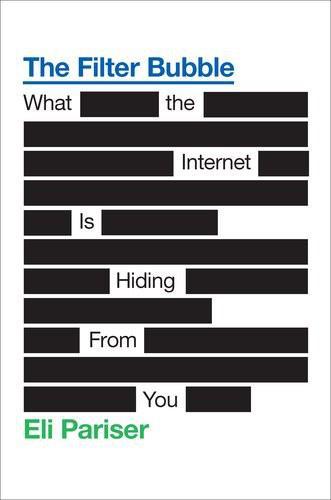
The Filter Bubble: What the Internet Is Hiding From You
by
Eli Pariser
Published 11 May 2011
This is one other way that personalized filters can interfere with our ability to properly understand the world: They alter our sense of the map. More unsettling, they often remove its blank spots, transforming known unknowns into unknown ones. Traditional, unpersonalized media often offer the promise of representativeness. A newspaper editor isn’t doing his or her job properly unless to some degree the paper is representative of the news of the day. This is one of the ways one can convert an unknown unknown into a known unknown. If you leaf through the paper, dipping into some articles and skipping over most of them, you at least know there are stories, perhaps whole sections, that you passed over.
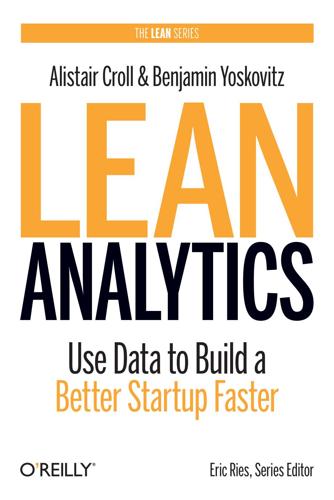
Lean Analytics: Use Data to Build a Better Startup Faster
by
Alistair Croll
and
Benjamin Yoskovitz
Published 1 Mar 2013
Exploratory Versus Reporting Metrics Avinash Kaushik, author and Digital Marketing Evangelist at Google, says former US Secretary of Defense Donald Rumsfeld knew a thing or two about analytics. According to Rumsfeld: There are known knowns; there are things we know that we know. There are known unknowns; that is to say there are things that we now know we don’t know. But there are also unknown unknowns—there are things we do not know, we don’t know. Figure 2-1 shows these four kinds of information. Figure 2-1. The hidden genius of Donald Rumsfeld The “known unknowns” is a reporting posture—counting money, or users, or lines of code. We know we don’t know the value of the metric, so we go find out. We may use these metrics for accounting (“How many widgets did we sell today?”)
…
jobs-be-done approach, User Engagement Johnson, Clarence “Kelly”, Span of Control and the Railroads Jones, Healy, OfficeDrop’s Key Metric: Paid Churn Just For Laughs show, Sharing with Others K Katz, Keith, Average Revenue Per User, Mobile Customer Acquisition Cost Kaushik, Avinash, Eight Vanity Metrics to Watch Out For, The Long Funnel Kennedy, Bryan, Mobile Customer Acquisition Cost key performance indicators (see KPIs (key performance indicators)) keywords driving traffic to site, A Practical Example, WineExpress Increases Revenue by 41% Per Visitor Kijiji site, What DuProprio Watches Kim, Ryan, Mobile Customer Lifetime Value KISSmetrics site, Instrumenting the Viral Pattern Klein, Laura, How to Handle User Feedback known knowns, Eight Vanity Metrics to Watch Out For known unknowns, Eight Vanity Metrics to Watch Out For KP Elements, Shopping Cart Abandonment KPIs (key performance indicators) about, What Makes a Good Metric? for engines of growth, Eric Ries’s Engines of Growth Moz case study, Moz Tracks Fewer KPIs to Increase Focus OMTM and, The Discipline of One Metric That Matters WP Engine case study, WP Engine Discovers the 2% Cancellation Rate Krawczyk, Jack, Engaged Time L lagging metrics about, What Makes a Good Metric?
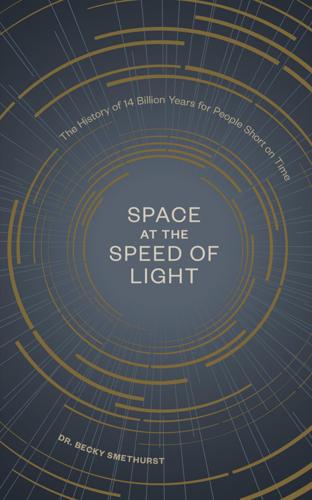
Space at the Speed of Light: The History of 14 Billion Years for People Short on Time
by
Becky Smethurst
Published 1 Jun 2020
There’s a popular way of thinking about what we know and what we don’t know. First, there are the known knowns—things we know that we know: that the Earth is a sphere; that there are planets around other stars; that the universe is expanding. Then there are things that we know we don’t know—the known unknowns: we don’t know what dark matter is made of; what form matter takes in black holes; or whether direct collapse black holes are possible. Then there are the unknown unknowns—things we don’t know that we don’t know. Hindsight gives us a few examples of these, such as the discovery of radioactivity after Marie Curie’s experiments with uranium, or Benjamin Franklin’s discovery of electricity.

Radical Uncertainty: Decision-Making for an Unknowable Future
by
Mervyn King
and
John Kay
Published 5 Mar 2020
His famous response was widely derided: ‘There are known knowns; there are things we know we know. We also know there are known unknowns; that is to say we know there are some things we do not know. But there are also unknown unknowns – the ones we don’t know we don’t know.’ 6 Yet Rumsfeld was saying something important. 7 The follow-up question to Rumsfeld’s musings is less well remembered than the observation that provoked it. The Defense Secretary was asked in which category – known knowns, known unknowns or unknown unknowns – did intelligence about terrorism and weapons of mass destruction fall? Rumsfeld’s response was ‘I am not going to say which it is’. 8 But no link between Iraq and the 9/11 attack has been established, and no weapons of mass destruction were found.
…
And the Xerox Corporation, which had contributed more than any other company to the innovations that made mobile computing possible, never derived commercial benefit from the inventiveness of its scientists. The pioneers of computing had built puzzle-solving machines of extraordinary power. But they had failed to understand the mysteries of business strategy as applied to their industry. From unknown unknowns to known unknowns Mysteries can sometimes be resolved by advances in knowledge. Dinosaurs dominated Earth for 130 million years (humans have done so for perhaps 100,000 years). But around 65 million years ago, an extraordinary event in our planet’s history led to the disappearance of most species, including the dinosaurs – the Cretaceous–Paleogene extinction.

Spies, Lies, and Algorithms: The History and Future of American Intelligence
by
Amy B. Zegart
Published 6 Nov 2021
Some thought it was a gaffe. Others called it convoluted thinking. Some even set his comments to music.23 Here’s what he said: Reports that say that something hasn’t happened are always interesting to me, because as we know, there are known knowns; there are things we know we know. We also know there are known unknowns; that is to say we know there are things we do not know. But there are also unknown unknowns—the ones we don’t know we don’t know. And if one looks throughout the history of our country and other free countries, it is that latter category that tends to be the difficult ones.24 But Rumsfeld wasn’t rambling.
…
For example, whether China has an aircraft carrier is a knowable fact, and it is known by U.S. intelligence agencies: China’s first aircraft carrier, the Liaoning, was purchased from Ukraine in 1998.26 Kent described a second type of information as “things which are knowable but happen to be unknown to us,” or what Rumsfeld called the “known unknowns.” How exactly does the Liaoning maneuver at sea under various conditions? That information exists, but it requires first-hand knowledge on board the ship over long stretches of time. Chinese sailors know it, but U.S. intelligence agencies may not. Kent called the third type of information “things which are not known to anyone,” or Rumsfeld’s “unknown unknowns.”
…
How long, for example, will the Chinese Communist Party remain in power? Not even Chinese leader Xi Jinping has the answer. Leaders’ intentions often fall into the unknown unknown category, too—because they are not clear even to the leaders themselves.27 TABLE 4.1 Three Types of Intelligence Known Knowns Known Unknowns Unknown Unknowns Description Indisputable facts: things that are knowable and known by U.S. intelligence agencies Things that are knowable but unknown to U.S. intelligence agencies Things that are not knowable to anyone Example Existence of Chinese aircraft carrier Performance of Chinese aircraft carrier at sea Longevity of the Chinese Communist Party’s rule Difficulty Hard Harder Hardest Getting inside someone’s head is actually difficult, even for them.

Seeking SRE: Conversations About Running Production Systems at Scale
by
David N. Blank-Edelman
Published 16 Sep 2018
Yet this category persists as a source of outages today, perhaps because of a widely held practice in the industry of treating operations as a cost center, meaning that no business owner will invest it in, because it is not seen as something that can generate revenue for the business, as opposed to simply accumulate costs.15 For known-unknown problems, the path away from manual action is generally more resources or pausing normal processing in a controlled way, with some buffer of normal operation before more-detailed remediation work is required. Indeed, the conditions in which the full concentration of an on-call engineer are legitimately needed to resolve a known-unknown problem usually involve a flaw in the higher-level system behavior. An application layer problem, such as a query of death16 or resource usage that begins to grow superlinearly with input, is again amenable to programmatic ways of keeping the system running (automatically blocking queries found to be triggering restarts, graceful degradation to a different datacenter where the query is not hitting, etc.).
…
As discussed, sometimes it is cheaper, sometimes not, but it is typically a decision made by business owners that the particular code paths that recover a system should be run partially inside the brains of their staff rather than inside the CPUs of their systems. (I suppose this is externalizing your call stack with a vengeance.) In this bucket, therefore, engineers are put on call because of cost; in reality, the problem is perfectly resolvable with software. Known-unknowns Many software failures result from external action or interaction of some kind, whether change management, excessive resource usage beyond a quota limit, access control violations, or similar. In general, failures of this kind are definitely foreseeable in principle, particularly after you have some experience under your belt, even if the specific way in which (as an example) quota exhaustion comes into play is not clear in advance.
…
, Monitoring, Metrics, and KPIs Kim, Gene, SRE Patterns Loved by DevOps, SRE Patterns Loved by DevOps People Everywhere-Conclusion Kissner, Lea, The General Landscape of Privacy Engineering Klein, Matt, SRE throughout the development cycleon service meshes, The Service Mesh: Wrangler of Your Microservices?-The Future of the Service Mesh Knight Capital, Sacrifice Decisions Take Place Under Uncertainty known-knowns, software failure and, Underlying Assumptions Driving On-Call for Engineers known-unknowns, software failure and, Underlying Assumptions Driving On-Call for Engineers Kobayashi Maru, Active Learning Example: Wheel of Misfortune Koen, Brian, Approaching Operations as an Engineering Problem Kriegsspiel, Active Learning Kubrick, Stanley, The Awakening of Applied AI L Lafeldt, Mathias, Approaching Operations as an Engineering Problem Lamott, Anne, Better > Best: Set Realistic Standards for Quality large enterprises, Introducing SRE in Large Enterprises-Closing Thoughtsdefining current state, Defining Current State-To establish a roadmap for what products SRE will be responsible for, survey the current infrastructure landscape defining SRE for, Defining SRE-Defining SRE DevOps–SRE relationship, Replies identifying/educating stakeholders, Identifying and Educating Stakeholders implementing the SRE team, Implementing the SRE Team-Defining the role of supporting divisions introducing SRE into, Introducing SRE-Closing Thoughts lessons learned from process of introducing SRE, Lessons Learned preparing business case for SRE, Prepare the business case: personalize and evaluate the cost of having engineering resources responsible for reliability presenting business case for SRE, Presenting the Business Case sample implementation roadmap, Sample Implementation Roadmap launch readiness review (LRR), Pattern 2: Launch and Handoff Readiness Review at Google-Pattern 2: Launch and Handoff Readiness Review at Google leaders, as advocates for SRE, Start having conversations with leaders and champions in the organization Lean manufacturing movement, Start by Leaning on Lean-Start by Leaning on Lean learning, active (see active learning) Lee, Francis, Beyond culpability: building capacity instead of assigning blame Legeza, Vladimir, From SysAdmin to SRE in 8,963 Words, From SysAdmin to SRE in 8,963 Words-Conclusion LGBTQ+ inclusivity, Mental Disorders Are Missing from the Diversity Conversation, Benefits Lightweight Directory Access Protocol (LDAP), Understanding External Dependencies Limoncelli, Thomas A.on DevOps–SRE relationship, Replies on LRR, Pattern 2: Launch and Handoff Readiness Review at Google on shared source repository, Pattern 3: Create a Shared Source Code Repository LinkedIn, Testing and staging, Uses for RUM load balancers (see scriptable load balancers) logging, Logging logical backups, Full and incremental logical backups logical isolation, Logical isolation long short-term memory (LSTM) networks, Why Now?

Green Swans: The Coming Boom in Regenerative Capitalism
by
John Elkington
Published 6 Apr 2020
Boston: Houghton Mifflin Harcourt, 2011. 4.Susan Freinkel, Plastic. 5.https://www.plasticsmakeitpossible.com/about-plastics/types-of-plastics/professor-plastics-how-many-types-of-plastics-are-there/ 6.University of Georgia, “More than 8.3 billion tons of plastics made: Most has now been discarded,” ScienceDaily, July 19, 2017. See also: www.sciencedaily.com/releases/2017/07/170719140939.htm. 7.“The known unknowns of plastic pollution,” The Economist, March 3, 2018. See also: https://www.economist.com/international/2018/03/03/the-known-unknowns-of-plastic-pollution. 8.“WHO launches health review after microplastics found in 90 percent of bottled water,” The Guardian, 15 March 2018. See also: https://www.theguardian.com/environment/2018/mar/15/microplastics-found-in-more-than-90-of-bottled-water-study-says. 9.https://www.newplasticseconomy.org 10.Rob Dunn, “Science Reveals Why Calorie Counts Are All Wrong,” Scientific American, September 1, 2013.
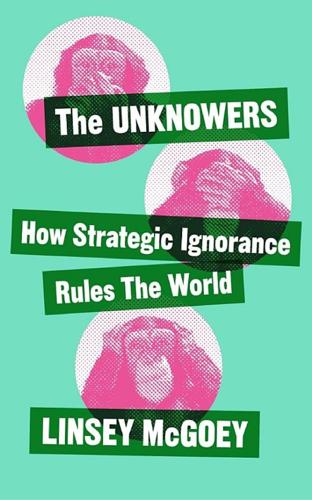
The Unknowers: How Strategic Ignorance Rules the World
by
Linsey McGoey
Published 14 Sep 2019
Former US Secretary of Defense Donald Rumsfeld pointed to the complexity of ignorance when he offered his now-infamous remark about the problem of ‘unknown unknowns’ nearly 20 years ago. Rumsfeld offered his much-quoted comment during a Department of Defense briefing in 2002, in response to being pressed about the existence of weapons of mass destruction in Iraq. ‘As we know, there are known knowns; there are things we know we know,’ he said. ‘We also know there are known unknowns; that is to say we know there are some things we do not know. But there are also unknown unknowns – the ones we don’t know we don’t know.’2 He is right. The full realm of the unknown is quite literally unknowable, and we do not know exactly how much we do not know. But Rumsfeld’s take on ignorance is also a highly limited one.
…
, 108–9 inherited privilege, 182–4 inherited wealth, 200 institutional ignorance, 33–4, 294–5 International Monetary Fund, 33–4, 137 Iraq war, 17, 31–2, 52 Jews, anti-Semitism, 79–81, 97–8 Johann-Liang, Rosemary, 273 judiciary, 199 Kant, Immanuel, 9, 308–9, 318–19 Kelsey, Frances Oldham, 254, 255–8 Kendall, Tim, 249–52, 286–7 Kerviel, Jérôme, 120 Ketek, 269–77; adverse reactions, 253–4, 271, 272–4; drug trial irregularities, 271–2, 274–7; FDA failings, 269–70, 272–3; labelling, 273; reliance on expert ignorance, 276–7; withdrawal, 253 Keynes, John Maynard, 31, 167, 170, 172–3 Khurana, Rakesh, 118–19 Kim, Jim Yong, 219–20 Kirkman-Campbell, Anne, 270–2, 274–6, 276–7 Knight, Frank, 133–4, 152 knowledge: derived from torture, 74–5; equal unknowers, 47–9; low desire for knowledge of life events, 38–9; political knowledge, 66–7, 95–6 known unknowns, 52 Koch, Charles and David, 65, 237, 238, 244 Kuttner, Stuart, 103–4 labour: Adam Smith’s wage labourers, 139; domestic labour, 125; exploitation, 129–30; weakened labour protection, 134, 137, 218–20; see also servitude; slavery laissez-faire economy, 20, 21, 126–7, 194–5, 200 The Lancet, 252, 259, 286 language, in ignorance pathways, 168, 169, 200–1 Lay, Kenneth, 235 Leeson, Nick, 120 Leveson inquiry, 109, 110–11 Lippmann, Walter, 16 List, Friedrich, 188–91 Liverpool Football Club, 88–9 Lorde, Audre, 18, 163, 317–18, 319–21, 326–8 Loveland, Douglas, 274, 275 Macdonald, John A., 26–7, 28, 313 McIntosh, Glenn, 288–90 macro-ignorance, 12–15, 169, 225–6 Madison, James, 47 Mandeville, Bernard, 248 Mankiw, Gregory, 132; Macroeconomics, 152–3, 216 marginal productivity theory, 76, 130–5, 152–3 market fundamentalism, 4–5, 6–7, 13 Mason, Paul, 43 Mazzucato, Mariana, 152, 304; The Value of Everything, 134–5 meat industry, 255 medical experiments, 72 Medicines Act (1968) (UK), 291–2 Medicines and Healthcare Products Regulatory Agency (MHRA): antidepressant reviews, 282–6; dependence on pharmaceutical companies, 278, 284–5; GlaxoSmithKlein investigation, 252, 290, 291–2; non-prosecutions, 252, 253, 278, 291, 292; unpublished medical trials, 251–2, 286; useful unknowns, 51 Meikson Woods, Ellen, 296 Mens Rea Reform Act (US), 236–44 mental health: National Collaborating Centre, 249–50; see also antidepressants Mercer, Robert, 85–6, 87 Merck, 258–61 Merrell, 256, 257 Meyer, Eugene, 219 MHRA see Medicines and Healthcare Products Regulatory Agency (MHRA) micro-ignorance, 12–15, 141–2, 168, 225–6 Middle East, 14–15, 68–9, 202–3 Mill, George, 159 Mill, James, 161 Mill, John Stuart, 37, 41; as an ‘unknower’, 156–7, 162, 299; Autobiography, 157–60; Britain’s peaceful global dominance, 202, 203; co-authorship with wife and stepdaughter, 7, 60–1, 153, 157–60; Considerations on Representative Government, 161; and the coolie trade, 155–6; On Liberty, 7, 60–1, 153, 158, 166; Principles of Political Economy, 158; The Subjection of Women, 202, 203; voter franchise limitations, 156 Mills, Charles, 45, 304 mining companies, 185, 222–4 Miranda, Lin-Manuel, 193 Mishra, Pankaj, 44, 304 Monod, Jacques, 6 Montesquieu, Albert de Secondat, 29 Mosholder, Andrew, 287–8 Mulcaire, Glenn, 104, 105, 106, 112–13 multinational companies, 185, 219, 222–4 Murdoch, Elisabeth, 101, 115–16, 117 Murdoch, James, 100, 102 Murdoch, Lachlan, 102 Murdoch, Rupert: ignorance of phone hacking, 19; and racist news outlets, 85–6; select committee appearance, 99, 100–1, 114; Sun office meeting, 114–15; wilful blindness, 101–2 Muttitt, Greg, 32 Nasaw, David, 207, 208, 210 Nazism, 72, 74 neoclassical theory, 130–3, 303 Nevsun Resources, 223–4 New York Times, 54–5, 87, 238 News Corporation, 115–16, 117, 119–20, 274–5; see also phone hacking News of the World: Gordon Taylor lawsuit, 105–6; phone hacking, 19, 99, 101, 102–3; use of private investigators, 103–4 Nobel prize, 60–1 Nuremberg Code, 72 Obama, Barack, 82, 91–2, 148–9 oil companies: and Iraq war, 31–2; Standard Oil, 4, 211–14 On Liberty (Mill), 7, 60–1, 153, 158, 166 Open Society (Popper), 164 Operation Motorman, 107–8 oracular power: Brennan’s ‘simulated oracle’ test, 66–7, 95–6; concept, 16, 61–2; divine providence, 67–9; financial advisors, 67; historical context, 62–4; mainstream economic theories, 217; natural and social scientists, 64–7 Orwell, George, 129, 131–2, 164, 168, 225, 309–10 Ostrich instruction, 21, 228, 231–2; see also wilful ignorance Owens, Alec, 109–11 Paine, Thomas: ‘Agrarian Justice’, 183–4; blame-shifting, 180, 307; on divine providence, 174; and elite ignorance, 18–19; on hereditary privilege, 182–4, 308; Rights of Man, 149, 183 Patnaik, Utsa, 44, 304 pharmaceutical industry: damage settlements, 261; distortion of evidence, 11–12, 75; fear of reputational damage, 263–4; fraud, 22; medical trial data, 250–2, 259–60, 262; Merck settlement, 261; presumption of innocence, 291, 292–3; regulation seen as barrier to progress, 257–8; UK’s weak regulatory system, 252–3, 278, 291, 292; useful unknowns, 51, 257; Vioxx and heart failure, 258–62; see also drug trials; drugs philanthropy, 97–8, 204, 308 phone hacking: Caryatid Operation, 112–13; and corporate ignorance, 19; Culture, Media and Sport Committee report, 99–101; Gordon Taylor lawsuit, 105–6; ICO failure to pursue journalists, 109–12; method, 104–5; News of the World, 19, 99, 101, 102–3; victims, 19, 100, 105–6, 112 Pinker, Steven: Bannon-Pinker conundrum, 34–5; Enlightenment Now, 20, 36, 37, 135–6, 142, 202, 203, 224; globalization, 175; information avoidance theories, 37–8; poverty and in-country inequality, 36–7; on wealth distribution, 147–8 Plato, 164, 296, 297 plausible deniability, 56, 120 political deceptions, 30–1 political liberalism, 41 Popper, Karl, 163–5, 297–8; Open Society, 164 positive-sum theory, 123, 136, 147 Powell, Enoch, 68 press freedom, 199 Preston, Lewis, 219 prisoners of war, 72–3 private investigators, 103–4, 107–8 Proctor, Robert, 11 The Protocols of the Elders of Zion, 79–81 Prozac, 280–1, 289, 290 Pulquero, Ramiro Obrajero, 272 Puri, Poonam, 222–3, 304 race realism, 48 racial exploitation, 304 racism, 45, 48, 84–7, 319 Rampell, Catherine, 171, 217 rational ignorance, 46–7 Rawls, John, ‘veil of ignorance’, 8–9, 46 Reagan, Ronald, 68 reckless ignorance, 54–6, 235, 304 regulation: Adam Smith legacy, 20–1, 121, 126–7, 136–7, 140–1; anti-regulation stance, 246–8, 258, 303, 307; Hayek’s disdain, 248, 301, 303; pharmaceutical industry, 252–3, 257–8, 278, 291, 292; Tocqueville’s recommendations, 20–1, 197–200, 301 rent, 128 rent-seeking, 127–8, 131, 132 Rhodes, Cecil, 313 Ricardo, David, 186–7 Robbins, Lionel, 146 Robins, Nick, 180–1 Robinson, Joan, 133, 135, 147, 152 Rockefeller, John D.: belief in self-made success, 205, 214; beneficiary of laissez-faire practices, 205–6; deceitful opposition to anti-monopoly legislation, 4; master of ignorance, 20; new cooperation principle, 215; philanthropy, 204; secretive railroad deals, 211–13; South Improvement Company cartel, 213; Standard Oil, 4, 211–14; strategic ignorance of business takeovers, 213–14 Roosevelt, Franklin D., 196 Rosenfeld, Sophia, 58 Ross, David, 269–70, 272–3 Rumsfeld, Donald, 52 Samuelson, Paul, 134, 152 sanctioned ignorance, 40–2 Sand, George, 166–7, 324–6 Sanofi-Aventis, 269–77 Sarch, Alexander, 231–2, 233–5, 304 Sartre, Jean-Paul, 293–4 Schiebinger, Londa, 11 Schwartz, Anna, 54–5, 59–61 science, 8, 64–7 scientific racism, 48, 319 Scotland Yard, 112–14 Scott, Tom, 207, 212 Securities and Exchange Commission (SEC), 53–4 self-interest, 125–6, 126, 136, 139–40 Seroxat, 250–2, 282 servitude, 41–2, 44, 155–6 Shapiro, Aaron, 79 shared prosperity theory, 123, 136, 147 Sherman, Rachel, 117–18 Shine lawsuit, 115–16, 117 Simons, Henry, 246 Simpson, Jeffrey, 28 Sinclair, Niigaanwewidam James, 27 Sinclair, Upton, The Jungle, 255 slavery, 43–4, 205; see also servitude Smarsh, Sarah, 84 smarts see strong/smart groups Smith, Adam, 9; Britain a nation of shopkeepers, 192; criticism of monopoly protections, 127–9; criticisms of merchants, 247, 320; economic classes of society, 138–40, 143; and economic inequality, 136; on government regulation, 20–1, 121, 126–7, 136–7, 140–1; his mother’s influence, 125; inevitability of conflict, 186; misrepresentation of his ideas, 142–6, 310–12; on relative poverty, 142–3; on self-interest, 126, 136; strategic and wilful ignorance of, 122–3; tiered justice system, 121; timing and motives for helping the poor, 245; trade protectionism, 186, 190–1; on wealth distribution, 142–4, 191; Wealth of Nations, 6–7, 121, 125–6, 136, 169, 189, 245; Wealth of Nations abridged versions, 144–6 Smith, David, 109–10 snowmobile fallacy, 241–3 social silence, 53 Société Générale, 120 Socrates, 45, 63 Somin, Ilya, 94–5, 96 Sorel, Georges, 17 Soviet Union, uncomfortable facts, 5, 13 Spivak, Gayatri, 40–1 SSRI drugs see antidepressants Standard Oil, 4, 211–14 Steinzor, Rena, 244–5 Stewart, Maria W., 130–1 Stigler, George, 133, 246–7, 248 strategic ignorance: autocratic exploitation, 69–71; business practices, 20, 205; Carnegie, 208–10; corporate anonymity, 45–6; definition, 3; of drone strikes, 91–2; economic theory, 122–3; emancipatory nature, 315–17; exposure efforts treated as inexcusable, 269–70; Ford, 79–81, 98; MHRA’s non-prosecution record, 291–2, 293–4; and political networks, 22; Rockefeller, 213–14 strong/smart groups, 16–17, 69–71, 77, 173–4, 312–13 student loans, 185 Suez crisis, 31 suicide rates, 307 Sun, 114–15 Sutherland, Kathryn, 145–6, 159 Syll, Lars, 187 Symons, Baroness, 32 taxation, Paine’s proposals, 184, 308 Taylor, Gordon, 105–6 Taylor, Harriet, 7, 60–1, 153, 157–60, 166, 299 Taylor, Helen, 157–60 Taylor, Keeanga-Yamahtta, 68 Teicher, Martin, 280 Temple, Robert, 287–8 Tett, Gillian, 53 Thalidomide, 254, 256–8 think tanks, 65 Thomas, Richard, 110, 111 Tillerson, Rex, 214 tobacco industry, 51 Tocqueville, Alexis de: Democracy in America, 197–200, 309, 322–3; and divine providence, 322–4; French workers, 325–6; government regulation of industry, 20–1, 197–200, 301; prejudice against women, 166–7, 324–6 torture, 72–5 trade: free trade, 17–13, 57, 200–1; mercantilism, 169–70, 171; protectionism, 186, 188, 190–1; Ricardo’s comparative advantage theory, 186–8; US policy, 171, 188, 190, 217 Trefgarne, George, 179–80 Trump, Donald: class myths of voter support, 81–4, 162, 163; elite ignorance, 90–1, 93–4; on history, 314; on Obama, 82, 148–9; presidential election, 19; selective use of facts, 92–4; on torture, 73–4; and truth, 17; wealthy backers, 83–4 truth, liberating potential, 9–10 United Kingdom: male enfranchisement, 42; market interventionism, 43–4; military interventions, 14–15; Suez crisis, 31; trade policies, 44, 57, 186, 190–1; weak regulation of pharmaceutical companies, 252–3, 278, 291–2 United States: conscription, 14–15; drone strikes, 91–2; in-country inequality, 14–15, 36–7; labour oppression, 129–30; laissez-faire policies, 194–5; military interventions, 14–15, 68–9, 185; New Deal, 196; origins myths, 169; suicide rates, 307; trade policies, 171, 188, 190, 217; War Crimes Act (1996), 73; workplace deaths, 219–20 United States Department of Justice, 102, 238, 252, 261 Unser, Bobby, 242–3 unwitting ignorance, 42, 122–3 useful unknowns, 51–6, 257, 277 utilitarianism, 8, 155 ‘veil of ignorance’, 8–9, 46 Viner, Jacob, 300, 302–3 Vinson and Elkins, 235 Vioxx, 258–62 von Eschenbach, Andrew, 273 voter ignorance: Brexit, 82–3, 89–90, 162; collective, shared problem, 243–4; definition, 94; justification for disenfranchisement, 70, 156, 174; political knowledge test, 66–7, 95–6; solutions, 94–5; Trump election, 19, 162; see also democracy, and disenfranchisement War Crimes Act (1996) (US), 73 Washington Consensus, 34 Washington Post, 89, 171, 217, 257 Watkins, Sherron, 235 Watson, Mathew, 187, 188 wealth: evidence of intelligence, 77, 81; financial oligarchy, 65; ignorance and inherited wealth, 139; inherited wealth, 117–18; and morality, 162–3; and racism, 84–7; US voter support for Trump, 83–4, 162, 163 wealth inequality: effect on social wellbeing, 135, 147; God’s will, 75–7; growth, 137; in-country inequality, 36–7; India-England, 129; legitimisation, 75–6; as natural law, 71; relative poverty, 143 Wealth of Nations (Smith), 6–7, 121, 125–6, 136, 169, 189; abridged versions, 144–6 Weber, Max The Protestant Ethic and the Spirit of Capitalism, 67 welfare systems, 185–6 wellbeing, and inequality, 135, 147 whistle-blowers, 40, 262–3 White, William Allen, 81, 97, 111–12 white-collar crime, Mens Rea Reform Act, 236–44 Whittam Smith, Andreas, 102 Whittamore, Steve, 107–8, 109, 110 wilful ignorance: definition, 21–2, 228–9; difficult to prove, 22; Enron, 21–2; equal culpability thesis, 233–5; financial law, 239–40; first court appearances, 227–8; Grenfell Tower fire, 24–6; ‘ignorance doesn’t excuse’ principle, 231–3, 239–40; News International, 274–5; and reckless ignorance, 235; Rupert Murdoch, 101–2; suspected fraud Ketek trials fraud, 271–2, 274–7 Williams, Zoe, 90 Williamson, Kevin, 83 Wollstonecraft, Mary, 20–1, 163, 317; economic fairness, 122; family background and social norms, 268, 269; legacy, 151–2; on mixed education, 312; ‘Rights of Men’ rebuttal of Burke, 149, 150–1 women: domestic violence, 59; ignorance of co-authorship, 7, 60–1; minority women, 59 Woods, Kent, 285–6, 290–1, 292 workplace health and safety, 217, 218–19, 238 World Bank: disputed assumption of neutrality, 221–2; Employing Workers Indicator, 225; institutional ignorance, 33–4; presidents, 219–20; weakened labour protection, 137, 218–20 Zinn, Howard, 196

Driverless Cars: On a Road to Nowhere
by
Christian Wolmar
Published 18 Jan 2018
Moreover, unexpected changes – such as a new traffic light, 85 Driverless Cars: On a Road to Nowhere an altered road layout or unplanned roadworks – require the test driver to take back control of the vehicle. This is a source not only of potential inconvenience, with autonomous cars stopping at unexpected hazards, but of safety, as they fail to recognize them. This brief round-up of the known unknowns is sufficient to show that the technology faces a myriad of difficulties before its widespread introduction, and that is even before, to continue quoting Donald Rumsfeld, we have come to the unknown unknowns. In that respect it is fascinating to contrast the development of driverless cars with railway technology.
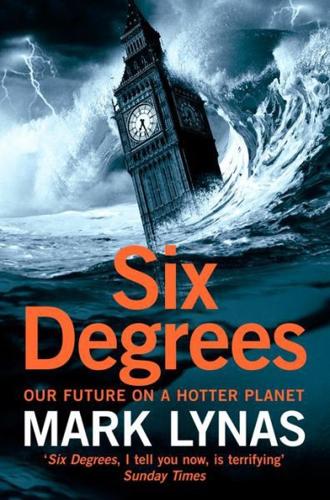
Six Degrees: Our Future on a Hotter Planet
by
Mark Lynas
Published 1 Apr 2008
My conclusion in this book, one which is supported by the 2007 IPCC report, is that we have less than a decade remaining to peak and begin cutting global emissions. This is an urgent timetable, but not an impossible one. It seems to me that the dire situation that we find ourselves in argues not for fatalism, but for radicalism. Knowing what we don't know To borrow from Donald Rumsfeld, one of the great ‘known unknowns’ in the climate change field, and the only part of the climatic equation that we actually have any control over, is future emissions-just how many more billions of tonnes of greenhouse gases humans are going to emit through burning fossil fuels and clearing forests over years to come. The IPCC has developed a complex set of ‘emissions scenarios’, each one of which builds in different assumptions about economic and population growth, globalism versus localism, and other key factors over the next century.
…
Future emissions, however, depend on decisions that are yet to be taken billions of times over by the likes of you and me. They depend on economics and politics, rather than the more solid ground of physics. For this reason, long-term emissions can probably never be accurately predicted. The second ‘known unknown’ is a genuinely scientific one: what academics call ‘climate sensitivity’. (I should note that neither of these uncertainties affects the scenarios portrayed in previous chapters of this book, which refer to the impacts of actual temperature rises, independently of the emissions scenarios that generate them.
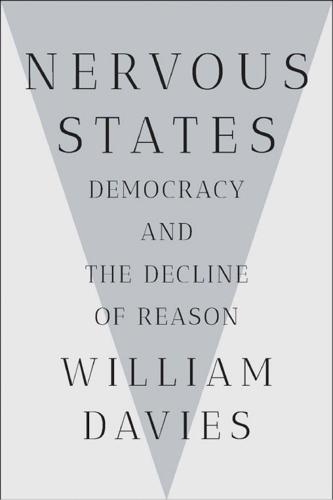
Nervous States: Democracy and the Decline of Reason
by
William Davies
Published 26 Feb 2019
From “facts” to “intelligence” Speaking at a press briefing on Iraq in February 2002, the then US Defense Secretary, Donald Rumsfeld, offered the philosophical analysis which has stuck to him ever since: as we know, there are known knowns; there are things we know we know. We also know there are known unknowns; that is to say we know there are some things we do not know. But there are also unknown unknowns—the ones we don’t know we don’t know. And if one looks throughout the history of our country and other free countries, it is the latter category that tend to be the difficult ones. Rumsfeld’s tripartite classification spawned jokes, astonishment, and even some admiration.
…
The publicity of statistics, economics, experimental findings, and philosophical arguments is crucial to their authority, for it is precisely the sense that they could be criticized or tested further that allows them to hold sway. Facts of this nature are “known knowns,” extracted from the larger “known unknown” that we call “nature” or “society.” By contrast, secrets (“unknown knowns”) may be a necessary ingredient in achieving security or military advantage, but are necessarily a precarious basis for peace. The influence and popularity of conspiracy theories in American public life is partly a signal of the power of the military and intelligence services over the American state and American civil society more broadly.
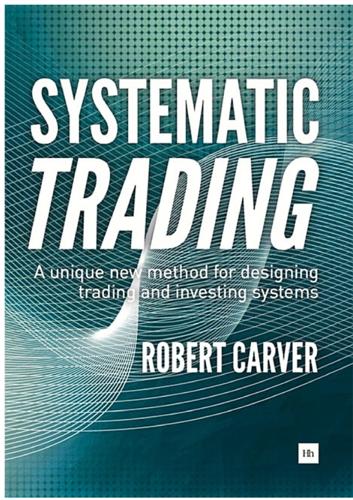
Systematic Trading: A Unique New Method for Designing Trading and Investing Systems
by
Robert Carver
Published 13 Sep 2015
We’ll assume risk is equal to the recent standard deviation of the daily percentage changes in price for each firm. 38 Chapter Two. Systematic Trading Rules CONCEPT: RISK Risk is a slippery concept which is difficult to pin down. I like to divide the world of risk into predictable risks, or what Donald Rumsfeld30 would call Known Unknowns, and unpredictable risks (Unknown Unknowns). It’s very hard to forecast what the return will be each day over the next few weeks for an asset or portfolio. But you can model and estimate what the variation in returns is likely to be. Estimates based entirely on assuming that recent levels of variation will persist tend to be relatively good.31 The element of risk that is encapsulated by a model of variation is the predictable part.
…
My example asset allocating investor will be running a fourth degree static portfolio. Although they will not use any dynamic trading rules, they will use the systematic framework to ensure that their portfolio risk remains as desired. 30. In a speech in 2002 US Secretary of State Donald Rumsfeld identified three kinds of knowledge: known knowns, known unknowns and unknown unknowns. 31. I’ll discuss exactly how you measure recent levels of standard deviation in chapter ten, ‘Position sizing’. If you can’t wait, it’s on page 155. 32. This essentially is the problem that Nassim Taleb discusses in his book The Black Swan. 39 Systematic Trading CONCEPT: VOLATILITY STANDARDISATION One of the most powerful techniques I use in my trading system framework is volatility standardisation.
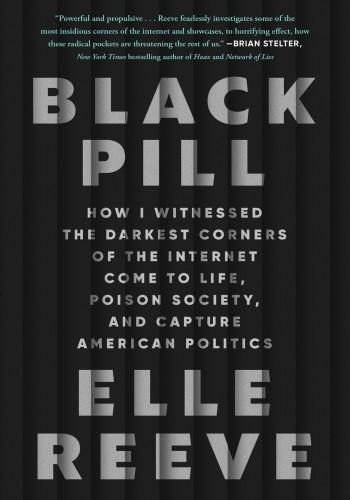
Black Pill: How I Witnessed the Darkest Corners of the Internet Come to Life, Poison Society, and Capture American Politics
by
Elle Reeve
Published 9 Jul 2024
Sometimes I send sources an infamous Donald Rumsfeld quote, which he said when asked about the lack of proof Iraq had weapons of mass destruction: There are known knowns; there are things we know we know. We also know there are known unknowns, that is to say, we know there are some things we do not know. But there are also unknown unknowns, the ones we don’t know we don’t know. When I watched this on TV in 2002, I thought, What an asshole. It gives me subversive pleasure now to use it for my own ends. I tell sources that I can publish the known knowns, and I can find out the known unknowns, but they have to help me figure out my unknown unknowns. Then I send them a YouTube clip of the philosopher Slavoj Žižek asserting there is a fourth category: the unknown knowns, that which we do not know we know.

Magic Pill: The Extraordinary Benefits and Disturbing Risks of the New Weight-Loss Drugs
by
Johann Hari
Published 7 May 2024
After 9/11, the US secretary of defense, Donald Rumsfeld, famously said the US faced several different categories of risk: “There are known knowns. These are things we know that we know. There are known unknowns. That is to say, there are things that we know we don’t know. But there are also unknown unknowns. There are things we don’t know we don’t know.” With these weight-loss drugs, there are known unknowns, relating to thyroid cancer, loss of muscle mass, and malnutrition, where we aren’t sure yet of their scale. But there are also unknown unknowns. When tens of millions of people start to take a drug—as is happening now—there could be some effects that we can’t see coming.

Mad Mobs and Englishmen? Myths and Realities of the 2011 Riots
by
Steve Reicher
and
Cliff Stott
Published 18 Nov 2011
To question it, or to suggest that it did not provide the entire solution, seemed a pointless, if not a perverse, thing to do. Conclusion On 12 February 2002, Donald Rumsfeld, the US Secretary of Defense briefed the Press about the situation in Iraq. He said that there are ‘known knowns’, things we know that we know; ‘known unknowns’, things we know we don’t know; and ‘unknown unknowns’, things we don’t even realize we don’t know. Of the three, Rumsfeld said, the last is the most dangerous.41 But perhaps there is something still more perilous. That is when we think we know something, but it turns out that we don’t. Because then we resist calls to find out more and refuse to examine how firmly our responses are grounded.
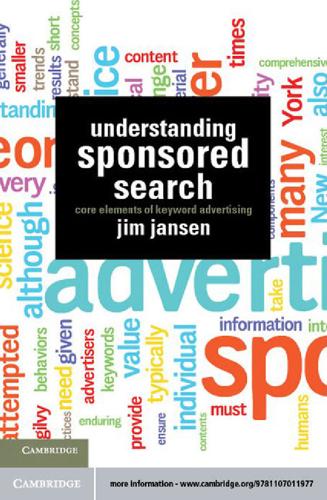
Understanding Sponsored Search: Core Elements of Keyword Advertising
by
Jim Jansen
Published 25 Jul 2011
Following this, we discuss 149 150 Understanding Sponsored Search the research concepts of validity, creditability, and reliability. We end with an introduction to privacy issues and click fraud with online analytics. Potpourri: In any analysis, there are obviously things we know and things we do not know. However, there is another element to puzzle. In fact, there is a 2x2 of known-unknown and aware-unaware. This 2x2 is a common framework in any aspect of risk mitigation or use of data analysis for forecasting. Basically, the idea is as follows: • • • • • • There are things that you know about (i.e., the known). There are things you do not know about (i.e., the unknown). Naturally, if you know something, you are aware of it by definition.
…
D., 116 Hunter, Lee, 19 IdeaLab, 11 imperfect information, 179, 194 impression, 12, 14, 24, 75–77, 133, 209 impulse buying, 93, 97–98 income effect, 91 information access, 54–55, 70, 72 information acquisition, 35, 63 information asymmetry, 63–64 information foraging, 42, 44, 63, 66–67, 70, 72, 80, 96, 213 information foraging theory, 42, 67, 70 information imbalance, 63–64 information load, 63 275 information obtainability, 42–43, 49, 70–71, 211, 213 information overload, 68 information processing theory, 65, 94, 96 information retrieval, 2, 20, 37, 51, 70–71, 154, 211 information scent, 66–67 information science, xiii, 14, 35, 71, 87 information searching, 20, 37, 211 information theory, 42, 92 informational, xi, 44–46, 64, 93, 96 informivore, 66 Infoseek, 38 Intangible content, 131 internal information search, 88 Internet television, 224 iProspect, xvi, 167 iWon, 21 Jansen, Bernard J., 20, 44, 113–114, 116, 118, 158 Johnson, Samuel, 229 Kamangar, Salar, 181 key drivers of marketing, 128 key performance indicators, 24. See€key performance indicators Knowledge uncertainty, 99 known-unknown and aware-unaware, 150 Kotler, P., 128, 138 Kraatz, Mark, 12 La Gazette de France, 122 law of diminishing marginal returns, 50 law of probability, 165 Levine, Rick, 129 Levinson, Danny, 44 Lewis, E. St. Elmo, 94, 96 light-of-day test, 167 local deal websites, 224 Locke, Christopher, 129 Log analysis, 151 Lohse, G.
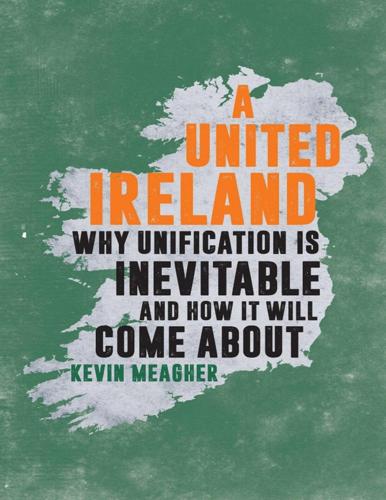
A United Ireland: Why Unification Is Inevitable and How It Will Come About
by
Kevin Meagher
Published 15 Nov 2016
Would we allow the police to round up people with no charge before subjecting them to deep interrogation? How would we react if vicars and pregnant women were killed in the street by our own soldiers? Furthermore, it begs the question: if this is what we know happened, with no one seriously disputing that the above events took place in the ways described, just how bad are the ‘known unknowns’? The events that took place during the Troubles that have still to come to light? Would some sort of truth and reconciliation process, of the kind frequently talked about in Northern Ireland in a bid to heal wounds and ‘deal with the past’, reveal, for instance, that British agents inside Republican paramilitaries deliberately targeted civilians in some of their infamous bombings in order to discredit them?
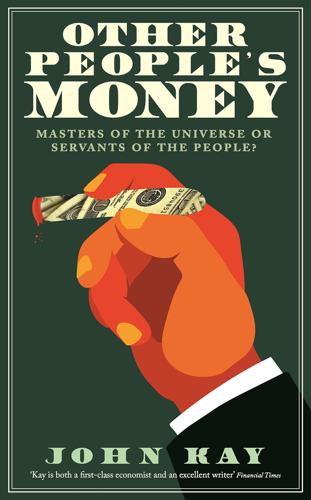
Other People's Money: Masters of the Universe or Servants of the People?
by
John Kay
Published 2 Sep 2015
But the assumption that this way of thinking predominates is the basis of ‘the Greenspan doctrine’. Robert Rubin, a deeper thinker than Greenspan, had emphasised the need for probabilistic thinking in his memoir of his time as Treasury secretary, In an Uncertain World.21 And yet the very title of Rubin’s book elides the critical distinction between risk – the ‘known unknowns’ which we can describe with the aid of probabilities – and the ‘unknown unknowns’ or ‘black swans’22 – events to which we cannot assign probabilities because we may not even know what the events in question are. You cannot judge the probability of the invention of the wheel because in visualising the possibility you have already invented it.
…
Morgan Chase 231 junk bonds 46, 292 jurisdictional arbitrage 122–3, 223 ‘just culture’ 238 K Kahn, Alfred 238 Kahneman, Daniel 66 Kaupthing bank 294 Kay, John Obliquity 48 The Long and the Short of it 208 The Truth about Markets 240 Keating, Charles 292 Kerviel, Jérôme 50, 130 ‘ketchup economics’ 5, 15, 57, 69, 80 Keynes, John Maynard 67, 87, 110, 226, 307 The General Theory of Employment, Interest and Money 65, 297 Keynesianism 241 Kinder Morgan 117–18, 232 Knight, Frank 67 ‘known unknowns’ 67 Kohn, Don 56–7, 58, 73, 101 Kuznets, Simon 263 L Lagos, Nigeria: scammers in cyber cafés 118 Landesbanken 33, 169 large companies 160–64 Latin American states, default of (1980s) 37 Lazard family 217 Lazard Frères 205 Lazards 134 Leeds United FC 21 Leeson, Nick 130 Legal & General 200 Legg Mason 109 Lehman Brothers 24, 32, 34, 43, 75, 91, 121, 122, 135, 231, 277, 280–81, 293 ‘lender of the last resort’ 90, 244, 275 leverage 100–105, 282 central to modern financial crises 104 debt element of risk 101 defined 100 and derivative contracts 191 equity element of risk 101 forms of 101 and a high return on equity 137–8 ‘out of the money option’ 102, 103 and property transactions 155, 156 refinancing established companies 166 and shareholder value 211 tailgating strategy 102, 103, 104 the ‘winner’s curse’ 103, 104 Levin, Sen.
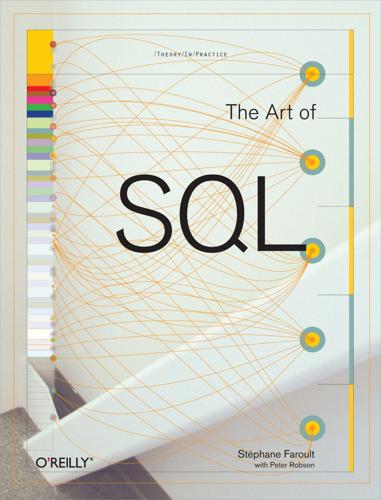
The Art of SQL
by
Stephane Faroult
and
Peter Robson
Published 2 Mar 2006
Secretary of Defense, Mr. Donald Rumsfeld, at a February 2002 news briefing of his department: As we know, there are known knowns. There are things we know we know. We also know there are known unknowns. That is to say we know there are some things we do not know. But there are also unknown unknowns, the ones we don't know we don't know. I don't find it unusual to have null values for, to put it in Rumsfeldese, "known unknowns," attributes that are known to exist and have some value we don't know at one point in time, for various reasons. For the rest, speculating leads nowhere. Strangely, some of the most interesting usages of null values may perfectly involve nothing but tables where all columns of all rows contain values: null values can be generated through outer joins.
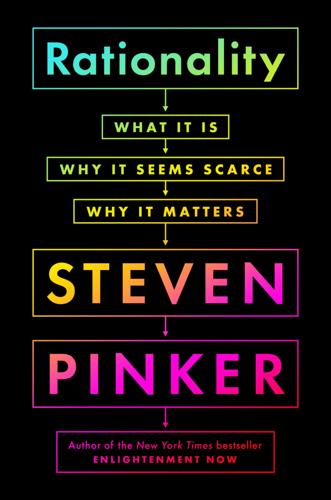
Rationality: What It Is, Why It Seems Scarce, Why It Matters
by
Steven Pinker
Published 14 Oct 2021
This is called risk, and may be distinguished from uncertainty, where the decider doesn’t even know the probabilities and all bets are off. In 2002, the US defense secretary Donald Rumsfeld famously explained the distinction: “There are known unknowns; that is to say we know there are some things we do not know. But there are also unknown unknowns—the ones we don’t know we don’t know.” The theory of rational choice is a theory of decision making with known unknowns: with risk, not necessarily uncertainty. I’ll call the fourth axiom Consolidation.7 Life doesn’t just present us with lotteries; it presents us with lotteries whose prizes may themselves be lotteries.
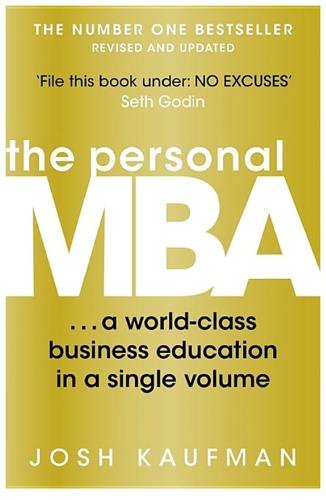
The Personal MBA: A World-Class Business Education in a Single Volume
by
Josh Kaufman
Published 2 Feb 2011
There’s an enormous difference between risk and Uncertainty. In the immortal words of former U. S. secretary of defense Donald Rumsfeld: There are known knowns. These are things we know that we know. There are known unknowns. That is to say, there are things that we know we don’t know. But there are also unknown unknowns. These are things we don’t know we don’t know. Risks are known unknowns. If you’re planning to pick up a friend from the airport, the probability that their flight will arrive several hours late is a Risk—you know in advance that the arrival time can change, so you can plan accordingly.

Obliquity: Why Our Goals Are Best Achieved Indirectly
by
John Kay
Published 30 Apr 2010
Perhaps only a sad mathematician would formalize it in the way I have outlined, but almost everyone appreciates the general properties of the model even if they have not spelled out the mathematics. The uncertainty about the bus’s arrival has two components. There is risk derived from the randomness reproduced within the model: the known unknown. There is uncertainty about the appropriateness of the model as a description of the world: the unknown unknown. The first of these components allows an objective description; the second does not: There is not, and cannot be, any analysis that shows that it is right to wait for twenty minutes but wrong to wait for twenty-five.
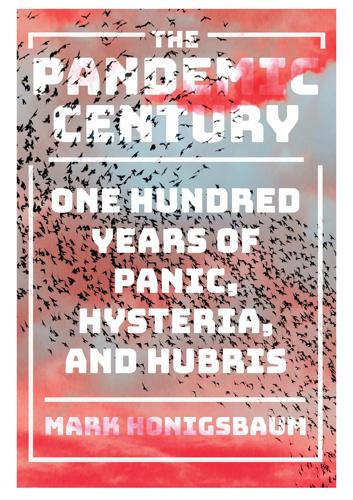
The Pandemic Century: One Hundred Years of Panic, Hysteria, and Hubris
by
Mark Honigsbaum
Published 8 Apr 2019
Asked by a journalist what evidence he had that Iraq had supplied or was willing to supply terrorists with weapons of mass destruction, Rumsfeld responded: “Reports that say that something hasn’t happened are always interesting to me, because as we know, there are known knowns; there are things we know we know. We also know there are known unknowns; that is to say we know there are some things we do not know. But there are also unknown unknowns—the ones we don’t know we don’t know.” At the time, Rumsfeld’s comments were widely lampooned for their “Alice in Wonderland” quality, but, as many of Rumsfeld’s critics subsequently acknowledged, he was drawing on well-known scholarship in the philosophy of knowledge and the social construction of scientific facts. Indeed, much scientific research is based on investigating known unknowns, where scientists develop a hypothesis and then design experiments to test the null hypothesis, or the commonly held view.
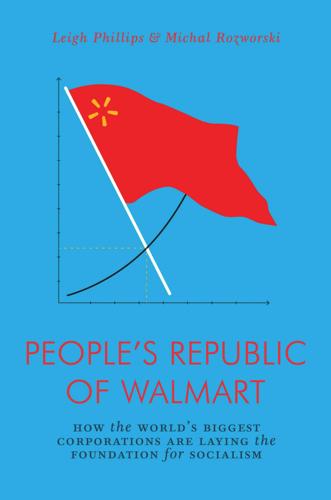
The People's Republic of Walmart: How the World's Biggest Corporations Are Laying the Foundation for Socialism
by
Leigh Phillips
and
Michal Rozworski
Published 5 Mar 2019
It all reminds of Karl Marx’s simultaneous admiration and condemnation of capitalism of the nineteenth century. How furious he was that such an incredible system, more productive than feudalism or slavery or any other previous economic structure, could also be so inexorably restricted, so bounded, so lazy with respect to what it could produce. All these possible things (whether knowns, known unknowns, or Rumsfeldian unknown unknowns) that could so benefit humanity would never be manufactured so long as they were unprofitable, or even just insufficiently profitable! This was what Marx meant when he raged against the “fettering of production.” Human progress, the expansion of our freedom, has thus far been held back by this irrational system. 6 NATIONALIZATION IS NOT ENOUGH On July 5, 1948, the National Health Service Act, establishing the world’s first universal, public and free healthcare system, came into effect in the UK.

Survival of the Richest: Escape Fantasies of the Tech Billionaires
by
Douglas Rushkoff
Published 7 Sep 2022
Vertical farms with moisture sensors and computer-controlled irrigation systems look great in business plans and on the rooftops of Bay Area startups; when a palette of topsoil or a row of crops goes wrong, it can simply be pulled and replaced. The hermetically sealed apocalypse “grow room” doesn’t allow for such do-overs. Just the known unknowns are enough to dash any reasonable hope of survival. But this doesn’t seem to stop wealthy preppers from trying. The New York Times reported that real estate agents specializing in private islands were overwhelmed with inquiries during the Covid-19 pandemic. Prospective clients were even asking about whether there was enough land to do some agriculture in addition to installing a helicopter landing pad.
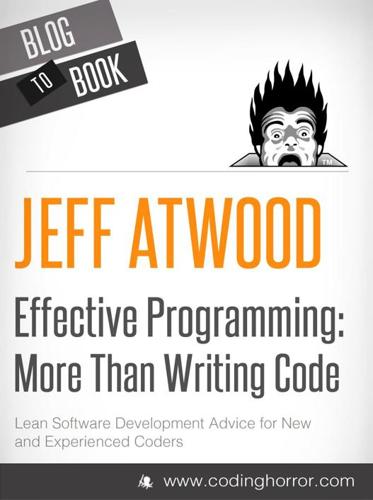
Effective Programming: More Than Writing Code
by
Jeff Atwood
Published 3 Jul 2012
But you also did a ton of things wrong that you don’t know about yet. And there’s no other way to find out what those things are until you ship this version and get it in front of users and customers. I think Donald Rumsfeld put it best: As we know, There are known knowns. There are things we know we know. We also know There are known unknowns. That is to say We know there are some things We do not know. But there are also unknown unknowns, The ones we don’t know We don’t know. In the face of the inevitable end-of-project blues — rife with compromises and totally unsatisfying quick fixes and partial soutions — you could hunker down and lick your wounds.

Progress: Ten Reasons to Look Forward to the Future
by
Johan Norberg
Published 31 Aug 2016
One interesting study published in Science looked at 100 biodiversity time series in marine and terrestrial habitats from the last 150 years, expecting to find ‘that most assemblages would exhibit a decrease in local diversity through time’. They were surprised to find the distribution of diversity slopes centred around zero, with the majority being statistically very close to zero. That is to say, the composition of species changed, but they found ‘no evidence for a consistent or even an average negative trend’.15 There are known unknowns – many species that we don’t even have a name for are becoming extinct. But we also know for certain that without urbanization, the protection of forests and more efficient agriculture, things would be much worse. And many of the most interesting areas with the most biological diversity are now being protected at pace.
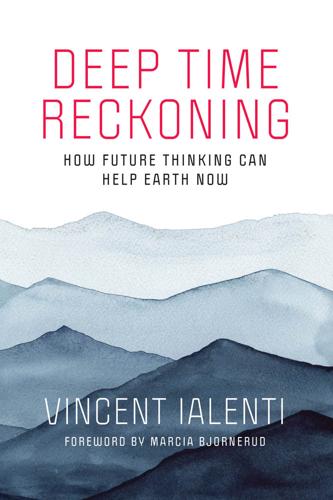
Deep Time Reckoning: How Future Thinking Can Help Earth Now
by
Vincent Ialenti
Published 22 Sep 2020
How can I adopt a constructively self-critical approach to reckoning distant futures without succumbing to indecision, information overload, or analysis-paralysis? When I make predictions, can I use Donald Rumsfeld’s famous formula to help me gauge my progress? This means asking: How can I account for the known knowns (what I know I know), the known unknowns (what I know I don’t know), and the unknown unknowns (what I don’t know I don’t know) that accompany any forecast? Have I accepted that my predictions may someday be revealed as rife with unknown knowns (what I once thought I knew but, over time, realized I did not ever know)?20 SHARPENING OUR TOOLS We must commit to growing into more well-informed analogizers of our futures.

Extreme Money: Masters of the Universe and the Cult of Risk
by
Satyajit Das
Published 14 Oct 2011
A VAR figure of $50 million at 99 percent over a 10-day holding period means that the bank has a 99 percent probability that it will not suffer a loss of more than $50 million over a 10-day period. VAR became accepted best practice, enshrined in bank regulations. Risk, the unknown unknown, was now a known unknown or even a known known. Former risk manager Barry Schacter offered an alternative definition of VAR: “a number invented by purveyors of panaceas for pecuniary peril intended to mislead senior management and regulators into false confidence that market risk is adequately understood and controlled.”22 Everything Is Just Noise The new theories required that everyone has rational expectations, that is, the population is correct on average even if no individual person is.
…
Readers wander around like the Russian harlequin in Joseph Conrad’s Heart of Darkness, a cross between a star-struck cult member and a Shakespearean fool: “I tell you this man has enlarged my mind.”6 Economic Rock Stars The financial media analyses every confused development in absurd detail. Crisis documentaries and films multiply at the same rate as losses. Fêted as a rock star at Davos, the black swan thesis of Nassim Taleb attracts attention. The crisis may be a black swan (an unknown unknown), white swan (a known unknown) or gray (all of the above) swan. Taleb combatively attacks the charlatans—anyone who does not agree with him. Economists and statisticians do not react well to being labeled pseudo-scientists of financial risk who disguised their incompetence behind maths. In August 2007, the imbeciles, knaves, and fools (Taleb’s descriptions) devoted an entire issue of The American Statistician to the black swan hypothesis.
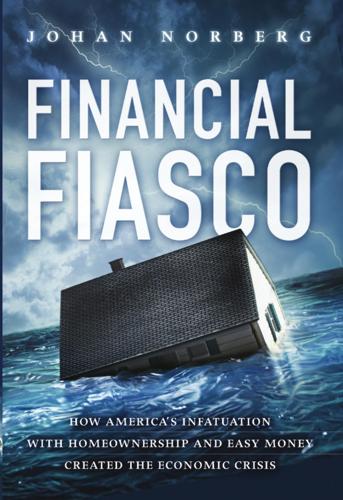
Financial Fiasco: How America's Infatuation With Homeownership and Easy Money Created the Economic Crisis
by
Johan Norberg
Published 14 Sep 2009
Even so, his description of risk concentration and of everybody standing or falling with everybody else felt disturbingly apt at the end of 2007. The problem was just that the weapons of mass destruction were hidden away in different places in the financial system. They were what Donald Rumsfeld would call "known unknowns"things we know that we do not know. The only question was whether there would be time to locate and defuse them before the "megacatas- trophe" that Buffett felt had to be included in the overall picture of risk.13 A Rational Panic Financial reporting over the next 12 months felt as though it were stuck on "Repeat": the housing market deteriorated even more, banks announced new losses, central banks lowered interest rates and came up with new, innovative ways to shower liquidity on the markets.

Investing Demystified: How to Invest Without Speculation and Sleepless Nights
by
Lars Kroijer
Published 5 Sep 2013
Would your credit card be working? Electricity and water? Could you get your money from the bank and if you could would that money actually be worth anything? I am going against the logic of Taleb’s book in even discussing how society’s breakdown could happen or its consequences. Taleb discusses the ‘known’ unknowns and the ‘unknown’ unknowns, and in my mind basically concludes that we don’t know squat, other than the fact that unlikely events are more likely to happen than we think. (Paradoxically he discusses buying government bonds and put options to protect against this, which both assume somewhat functioning financial markets to profit from the disasters.)
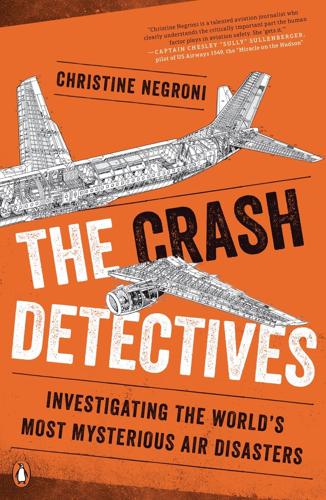
The Crash Detectives: Investigating the World's Most Mysterious Air Disasters
by
Christine Negroni
Published 26 Sep 2016
The recommendations for protecting the fuel tanks emerged repeatedly over the decades, but the FAA accepted Boeing’s position that if the triggers for the explosion could be identified and fixed, the design would be safe enough. What the TWA 800 disaster showed was that there would always be unknown triggers. We would have to call them the “known unknowns.” In 2006 the U.S. Department of Transportation issued a new rule: all new airplane designs had to include a system to protect the tank from explosion. Boeing’s newest airplane, the 787 Dreamliner, incorporates a fuel tank explosion-prevention system that is a direct result of the TWA crash investigation.
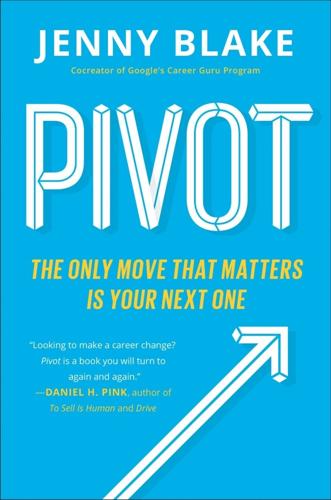
Pivot: The Only Move That Matters Is Your Next One
by
Jenny Blake
Published 14 Jul 2016
See also strengths technology, 4, 107, 119–20 “then what” questions, 112–13 thinking fear as consuming, 113 linear, 111–13, 176 stagnant, 157–59 strategic, 119–20 thought leadership, 60, 93, 126 Tierney, John, 49 Tom (brother), 95–96, 101, 208–9 travel pilots, 157–59 tyranny of the hows and the whole how, 55–56, 113 Uhrig, Scott, 4 unrealized gains, 186, 187–88, 189–91 Ursillo, Dave, 201–2 values aim/purpose of, 39–40, 53 career conversations and, 228 clarification of, 39–45 clusters of, 43 ranking of, 44, 45 shifting of, 40 vision and, 53, 57 visual reminder of, 45 Vice, Roxanne, 207–9 vision aim/purpose of, 53–55 clarification of, 60, 62–63 as cloudy, 56–57 importance of, 53–55 and knowns/unknowns, 62–63 and leapfrog approach, 132 one-year statement of, 57, 58–59, 60–62, 66 and purpose, 124 time-range for, 54–55 values and, 53, 57 Waitzkin, Josh, 108 Walker, Alice, 161 warm connections, 92. See also networking Watson, Thomas, 65 Watts, Alan, 119 Weiss, Ronnie Mae, 223, 224–25 White, Ryan (aka Bob Gower), 148–50 why: defining your project-based purpose, 124–25 Whyte, David, 54 willpower, 48, 49 work history, 70–73 Wrzesniewski, Amy, 20–21 yearly nut, 78 “Yes, and” technique, 112, 113 Zomick, Brad, 186 Zone of Genius, 67, 68–70, 72 Looking for more?
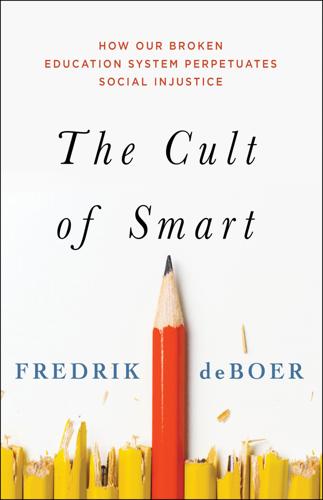
The Cult of Smart: How Our Broken Education System Perpetuates Social Injustice
by
Fredrik Deboer
Published 3 Aug 2020
Even the studies that show the most influence from the environment on quantitative indicators of personality traits tend to place that influence around 15 percent at most.4 The third law is Turkheimer’s nod to the unshared environment. It represents what former defense secretary Donald Rumsfeld would refer to as “known unknowns.” There is a significant portion of the variation in any given behavioral trait that we simply can’t consistently parse, a variation in environment and events that likely swings wildly from one person to another, even within families. These could include things like peer interactions, personal interactions with teachers, non-genetic medical conditions, the choices of the individual, and the steady progression of random chance.

Argo: How the CIA and Hollywood Pulled Off the Most Audacious Rescue in History
by
Antonio J. Mendez
and
Matt Baglio
Published 14 Jun 2012
This act of collecting intelligence is fairly low risk, since the traveler is not really going beyond the usual procedures of travel. Early on in the hostage crisis we had sent an all-points cable asking for anyone transiting through Mehrabad to monitor the controls. Once we had identified the gaps in our intelligence—the “known unknowns,” as you might say—we would move on to the second method, which is to send in a probe. In this case you are usually trying to test out a specific theory or concept. By mid-January, the CIA had been able to place several officers into Tehran who were collecting intelligence on a variety of things, including Mehrabad.
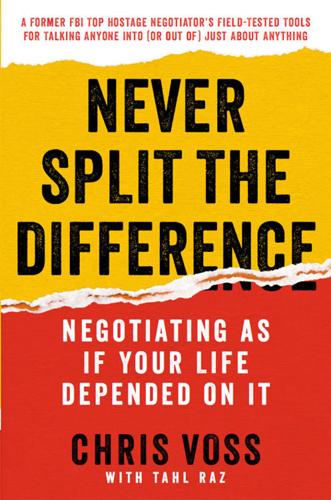
Never Split the Difference: Negotiating as if Your Life Depended on It
by
Chris Voss
and
Tahl Raz
Published 3 Oct 1989
There are those things we know, like our counterpart’s name and their offer and our experiences from other negotiations. Those are known knowns. There are those things we are certain that exist but we don’t know, like the possibility that the other side might get sick and leave us with another counterpart. Those are known unknowns and they are like poker wild cards; you know they’re out there but you don’t know who has them. But most important are those things we don’t know that we don’t know, pieces of information we’ve never imagined but that would be game changing if uncovered. Maybe our counterpart wants the deal to fail because he’s leaving for a competitor.
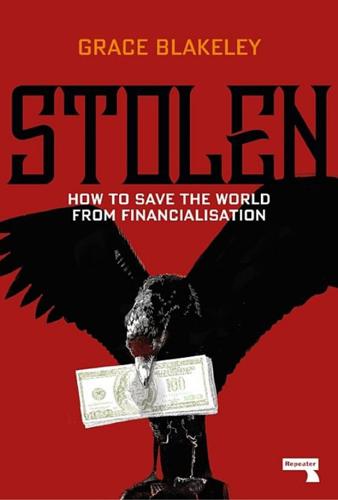
Stolen: How to Save the World From Financialisation
by
Grace Blakeley
Published 9 Sep 2019
In such situations, all we can do is predict the future based on the past, and the future is therefore uncertain — there are too many variables interacting with one another to allow us to predict outcomes with any certainty. Uncertainty is a completely different beast to measurable risk. Unlike risk, uncertainty is unquantifiable — the future is not only filled with known unknowns, but unknown unknowns. As Fred Knight, an American economist, pointed out almost a century ago, human beings treat uncertainty like risk. We use past experience to extrapolate the likelihood that an event will occur in a particular way. Having invested in one company in a particular industry and received a large return on our investment, we might assume that investing in another business in the same industry will be equally as profitable.
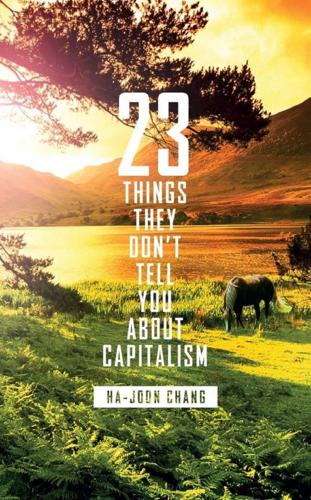
23 Things They Don't Tell You About Capitalism
by
Ha-Joon Chang
Published 1 Jan 2010
The best explanation of the concept of uncertainty – or the complexity of the world, to put it another way – was given by, perhaps surprisingly, Donald Rumsfeld, the Defense Secretary in the first government of George W. Bush. In a press briefing regarding the situation in Afghanistan in 2002, Rumsfeld opined: ‘There are known knowns. There are things we know that we know. There are known unknowns. That is to say, there are things that we now know we don’t know. But there are also unknown unknowns. There are things we do not know we don’t know.’ I don’t think those at the Plain English Campaign that awarded the 2003 Foot in Mouth award to the statement quite understood the significance of this statement for our understanding of human rationality.

Blitzscaling: The Lightning-Fast Path to Building Massively Valuable Companies
by
Reid Hoffman
and
Chris Yeh
Published 14 Apr 2018
FRAMEWORK FOR RESPONSIBLE BLITZSCALING The key to blitzscaling responsibly without sacrificing pace of growth is developing the ability to distinguish between various forms of risk. Our suggested framework for risk evaluation is to consider two separate axes: Known versus Unknown and Systemic versus Nonsystemic. Known Unknown Systemic Known/Systemic Unknown/Systemic Nonsystemic Known/Nonsystemic Unknown/Nonsystemic Uncertainty by itself isn’t risk; it simply produces unknowns, and unknowns aren’t inherently negative.
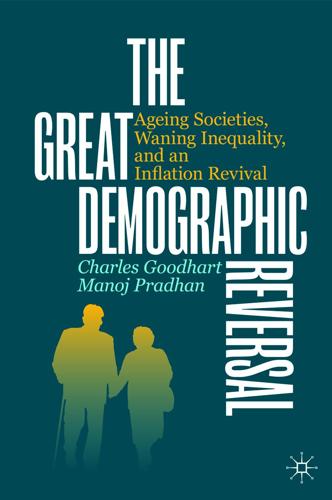
The Great Demographic Reversal: Ageing Societies, Waning Inequality, and an Inflation Revival
by
Charles Goodhart
and
Manoj Pradhan
Published 8 Aug 2020
The question, which we have been most frequently asked, is ‘Just when will the point of inflexion from deflation to inflation occur?’ When we were writing this book in 2019, we had to answer that we did not know to within five years, or so. That was, of course, before the coronavirus pandemic hit in early 2020; the occurrence of such a pandemic being a ‘known unknown’. The overall impact of the pandemic will be to accelerate the trends we have outlined in this book. China will become more inward-looking and less deflationary globally, and inflation itself will rise much earlier and faster than we had anticipated. Because of the importance of this to the issues that we raise in our book, our publisher kindly agreed to allow us to append a short epilogue (postscript) to the book.
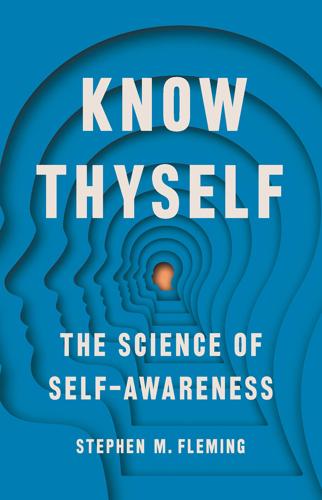
Know Thyself
by
Stephen M Fleming
Published 27 Apr 2021
—SØREN KIERKEGAARD, The Sickness unto Death On February 12, 2002, then US secretary of defense Donald Rumsfeld was asked a question by NBC correspondent Jim Miklaszewski about evidence that the Iraqi government had weapons of mass destruction. Rumsfeld’s response was to become famous: As we know, there are known knowns; there are things we know we know. We also know there are known unknowns; that is to say we know there are some things we do not know. But there are also unknown unknowns—the ones we don’t know we don’t know. And if one looks throughout the history of our country and other free countries, it is the latter category that tend to be the difficult ones. The idea of known and unknown unknowns is usually applied to judgments about the external world (such as weapons or economic risks).
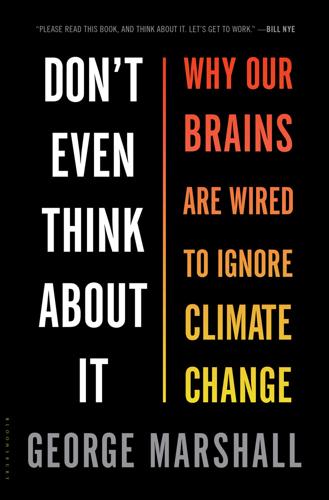
Don't Even Think About It: Why Our Brains Are Wired to Ignore Climate Change
by
George Marshall
Published 18 Aug 2014
This is not to say that climate change is uncertain at all: As with any complex issue, it can be read in terms of layers of confidence. Some aspects are well known, well understood, and almost certain. Some parts are conjectural, little understood, and highly uncertain. As former U.S. Defense Secretary Donald Rumsfeld would have it, there are known knowns, known unknowns, and unknown unknowns. Defining climate change as a whole as certain or uncertain is therefore a choice. Advocates of action focus on the known knowns and emphasize the scale of agreement around that. Opponents of action, such as the skeptical climatologist Judith Curry, emphasize the “whole host of unknown unknowns that we don’t even know how to quantify.”

The Age of Stagnation: Why Perpetual Growth Is Unattainable and the Global Economy Is in Peril
by
Satyajit Das
Published 9 Feb 2016
Central bank forecasts of a return to good times have proved optimistic, necessitating frequent downward revisions. The IMF launched a review of its forecasting performance—conducted by other economists. The ruminations of Indian central bank governor Raghuram Rajan rivaled former US Defense secretary Donald Rumsfeld's known unknowns: “Given that we gave it to you as a forecast, I can't forecast that we'll lower the forecast.”18 With their policy prescriptions unsuccessful, undaunted policymakers now propose new initiatives. One would involve helicopter drops of money, where the central bank prints large amounts and distributes it to the public to stimulate the economy.
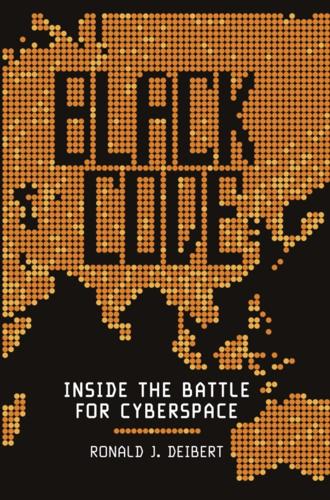
Black Code: Inside the Battle for Cyberspace
by
Ronald J. Deibert
Published 13 May 2013
” • • • Hacking Team: “Proven by more than 10 years of worldwide adoption and designed to fulfill LEAS and Security Agencies higher expectations, newly released version 8 ‘Da Vinci’ gives you total control over endpoint devices.” • • • Polaris Wireless: “With commercial deployments in EMEA and APAC regions, our lawful and mass location intercept solutions are ideal for tracking known/unknown targets to within 50 meters including urban and indoor areas.” • • • Semptian Technologies: headquartered in Shenzhen, China, a cyber-monitoring expert in “providing the technical LI means to intercept Internet, PSTN fixed telephone and mobile phone networks … Semptian helps Law Enforcement Agencies accomplish their missions such as criminal investigation, counter-terrorism, intelligence gathering and network security.”
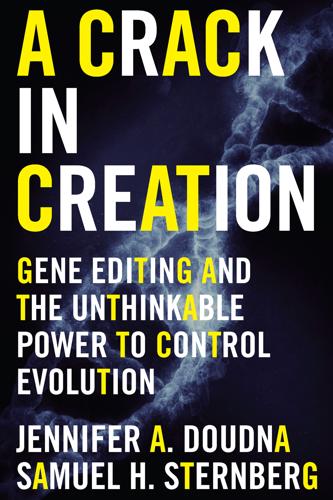
A Crack in Creation: Gene Editing and the Unthinkable Power to Control Evolution
by
Jennifer A. Doudna
and
Samuel H. Sternberg
Published 15 Mar 2017
If the number of potential off-target DNA sequences is too high, the researcher, aided by the algorithm, can simply select a new region to target. (In many cases, scientists can edit the same gene by choosing from a number of closely spaced DNA sequences.) The problem with this approach, though, is that the computer algorithm, no matter how well designed, may not always successfully predict off-target edits. These “known unknowns” have led researchers to adopt a second strategy: assume complete ignorance. They assume that every version of CRISPR will inevitably have unpredictable off-target effects, and that the only way to detect them is to just try the experiment first and then go hunting for new mutations in places where they shouldn’t be.
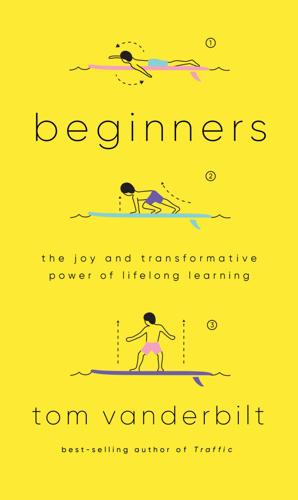
Beginners: The Joy and Transformative Power of Lifelong Learning
by
Tom Vanderbilt
Published 5 Jan 2021
Research suggests that couples: See A. Aron et al., “Couples’ Shared Participation in Novel and Arousing Activities and Experienced Relationship Quality,” Journal of Personal and Social Psychology 78 no. 2 (Feb. 2000): 273–84. “cognitive and behavioral flexibility”: See Benjamin Chapman et al., “Personality and Longevity: Knowns, Unknowns, and Implications for Public Health and Personalized Medicine,” Journal of Aging Research (2011), doi:10.4061/2011/759170. “More than any other animal”: Alison Gopnik, “A Manifesto Against ‘Parenting,’ ” Wall Street Journal, July 8, 2016. As the art historian Bruce Redford: See Redford’s fascinating study, Dilettanti: The Antic and the Antique in Eighteenth-Century England (Los Angeles: Getty Center, 2008).
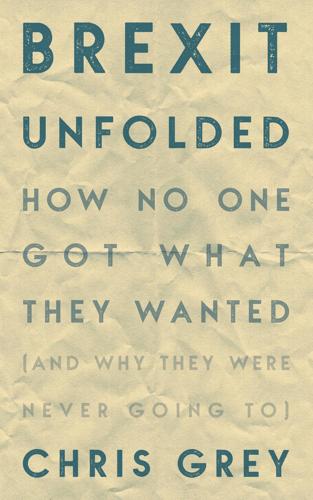
Brexit Unfolded: How No One Got What They Want (And Why They Were Never Going To)
by
Chris Grey
Published 22 Jun 2021
Another was whether the EU would grant UK financial services regulatory equivalence, with significant consequences for this major industry (some 7 per cent of UK GDP, compared with the 0.1 per cent accounted for by fisheries, which had so dominated the negotiations). These questions lay outside the TCA and were not a matter for negotiation but for unilateral decision by the EU, and even if granted could be taken back at any time. This was where ‘taking back control’ had led. Apart from all these ‘known unknowns’, it was also predictable that many unforeseen issues would in due course arise. Some of the very MPs who had voted for the Withdrawal Agreement the previous year, only to then discover that they didn’t like its provisions, had now endorsed the TCA when its ink was barely dry. As had happened before, it was highly likely that some of them would come to say that they had not realised what they had voted for when ratifying it.
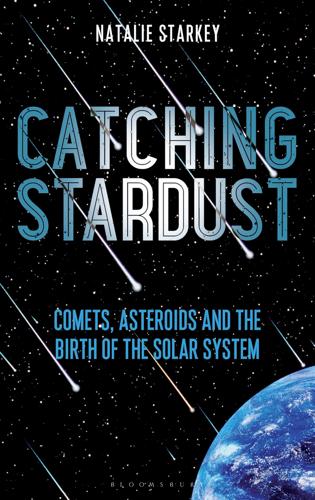
Catching Stardust: Comets, Asteroids and the Birth of the Solar System
by
Natalie Starkey
Published 8 Mar 2018
Nevertheless, such predictions are based on the space objects that we know exist, the ones that we can see, measure and predict their orbital courses. Unfortunately, there are some comets and asteroids that will be on Earth-crossing orbits in the future, possibly even within our lifetimes, that we can’t yet see – the known unknowns, shall we say? These objects, if not spotted soon enough, will give us little or no time to react to impending annihilation. We might not have time to prepare ourselves for an impact, or to do something to prevent it from occurring. What we can be certain of is that, even if we are safe for now, it’s very likely that our descendants are going to have to deal with the possibility that a comet or asteroid is heading for them.
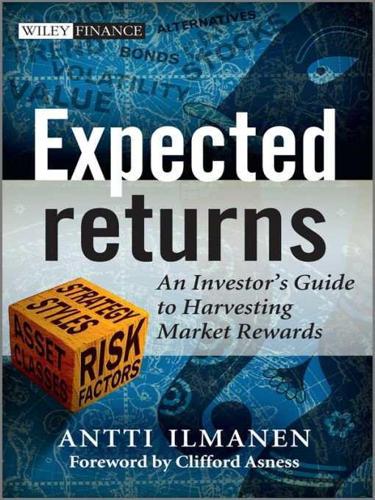
Expected Returns: An Investor's Guide to Harvesting Market Rewards
by
Antti Ilmanen
Published 4 Apr 2011
In the classic Ellsberg’s paradox, people prefer to take a gamble from an urn containing red and black balls with known 50/50 proportions than from an urn where balls are in unknown proportions, even though the objective probabilities are the same. Such dislike of “unknown unknowns”, as compared with “known unknowns” (a distinction first made by Frank H. Knight in 1921) may explain home bias and other observed preferences for familiar investments. Regret aversion. We may be motivated by the desire to minimize regret (e.g., when hanging on to losers). While risky choices always involve the possibility of adverse outcomes, some outcomes are more likely to trigger regret than others.
…
• Some researchers distinguish measurable volatility from ambiguity, unquantifiable (“Knightian”) uncertainty, structural uncertainty, and “unknown unknowns”. The latter concepts can be difficult to tell apart in practice, but the concept is simple: if you know the range of outcomes that can happen, but don’t know which one will happen, as in a baseball game (one of two teams will win), that is a “known unknown”; if you don’t know the range of possible outcomes, as in the stock market (we simply have no idea how far the market can fall in one day), that is an “unknown unknown” and represents a qualitatively greater degree of uncertainty. 19.2 FACTOR HISTORY Chapter 15 presented evidence on implied volatilities.
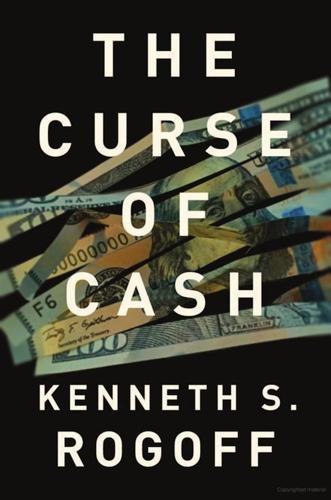
The Curse of Cash
by
Kenneth S Rogoff
Published 29 Aug 2016
One’s gut instinct is that shifting to electronic currency will be a fairly smooth process, though it is simply not possible to definitely rule out the possibility that it will upset social conventions and expectations and lead to an outcome that is quite different than planned. This is the kind of “known unknown” the government must plan for in making a transition, and we would be remiss to ignore it in this book. THE TAYLOR RULE, CREDIBILITY, AND THE ZERO BOUND This short section is for readers who are interested in more specific details of the literature on the academic debate surrounding just how serious an impediment to conventional monetary policy the zero bound actually is.
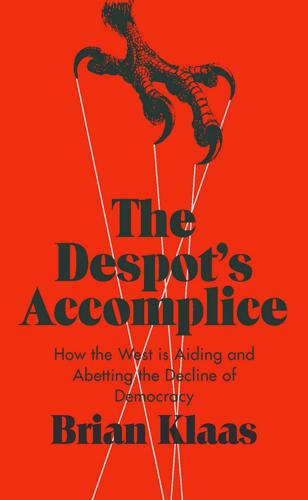
The Despot's Accomplice: How the West Is Aiding and Abetting the Decline of Democracy
by
Brian Klaas
Published 15 Mar 2017
The State Department, for example, doesn’t have a very well thought out policy review process to figure out what works best and what doesn’t work at all.27 â•… This, in short, is why programs like the doomed iPhone app in Iran, or the $416 million scheme that provided “no tangible benefit” to Afghan women, get funded in the first place. We are simply not entirely sure what works when it comes to on-the-ground democracy promotion, an example of what former US secretary of defense Donald Rumsfeld would call a “known unknown.” That obviously needs to be fixed, and a systematic review of spending should be enacted by the United States and the European Union to ensure that every dollar spent is spent well (while being careful not to micromanage with an excess of bureaucratic hoops for organizations to jump through).
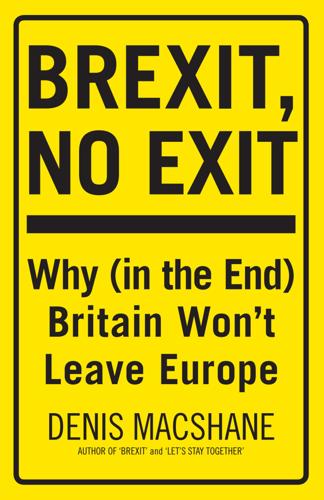
Brexit, No Exit: Why in the End Britain Won't Leave Europe
by
Denis MacShane
Published 14 Jul 2017
Europe is not dead as a result of Brexit, though British participation may be on hold for a while, just as the US placed on hold its involvement in international bodies like the International Labour Organization and League of Nations in the 1920s. The intelligentsia, whether as individual writers or collected in European university departments or think-tanks, do invaluable work. But the future relationship between the UK (or perhaps parts of the UK) and the rest of Europe is for the time being a known unknown. There will be a relationship, but until the consequences of the Brexit plebiscite are fully worked out, writing about it is thumb-sucking journalism, not real politics. At the core of all these concepts is the end of the full Single Market with its four freedoms of movement – of capital, of goods or services and of people.

Early Retirement Extreme
by
Jacob Lund Fisker
Published 30 Sep 2010
However, the more complex the situation--and life is generally more complex than assembling a piece of Swedish furniture--the greater the chance of something going wrong due to unknown unknowns--uncertain factors that nobody is aware of, also known as surprises, unknown knowns--certain factors that you're not aware of, meaning that you got the wrong plan, also known as "I told you so", known unknowns--uncertain factors that you are aware of, meaning that the plan is correct but lacking precision, also known as bad luck or bad design. The construction of a plan--that is, the way the tactics are coordinated and created--follows a set of guiding principles. If a plan shows how to put instructions together, then guiding principles show how to put a plan together and create a strategy.
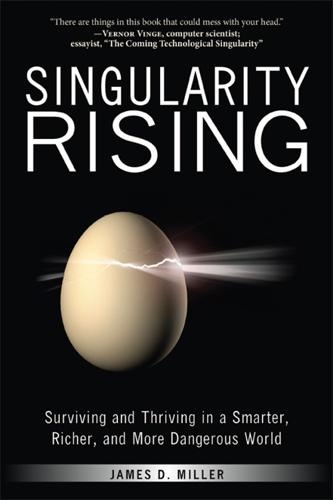
Singularity Rising: Surviving and Thriving in a Smarter, Richer, and More Dangerous World
by
James D. Miller
Published 14 Jun 2012
If decision makers in the future, human or otherwise, are smarter and more rational than we are, then economic theory might actually better describe their behavior than it does our own. Former US Secretary of Defense Donald Rumsfeld famously said: There are known knowns; there are things we know we know. We also know there are known unknowns; that is to say we know there are some things we do not know. But there are also unknown unknowns—the ones we don’t know we don’t know.28 The Singularity will undoubtedly deliver many unknown unknowns. But economics still has value in estimating how unknown unknowns will affect society. Much of economic behavior in capitalist countries is based on an expectation that property rights will be valuable and respected in the future.
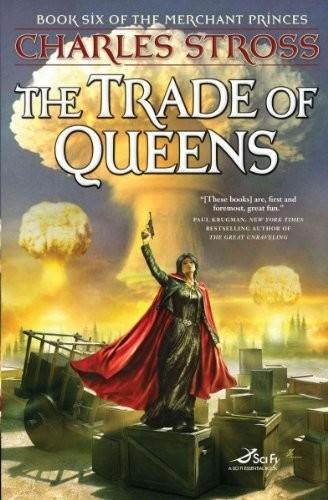
The Trade of Queens
by
Charles Stross
Published 16 Mar 2010
Then the surreal speech by the new president, preposterous claims that had no place in a real-world briefing; he'd thought WARBUCKS was mad for half an hour, until the chairman of the Joint Chiefs came on-screen on CNN, gloomily confirming that the rabbit hole the new president had jumped down was in fact not a rabbit hole at all, but a giant looming cypher like an alien black monolith suddenly arrived in the middle of the national landscape— And then the India-Pakistan war, and its attendant horrors, and the other lesser reality excursions—the Israeli nuclear strike on Bushehr, the riots and massacres in Iraq, China's ballistic nuclear submarine putting to sea with warheads loaded and the tense standoff in the Formosa Strait—and then the looking-glass world had shattered, breaking out of its frame: the PAPUA Act, arrests of radicals and cells of suspected parallel-universe sympathizers, slower initiatives to bring forward a national biometric identity database, frightening rumors about the military tribunals at Guantanamo that had so abruptly dropped out of the headlines— One day, after a couple of apocalyptic weeks, Agent Judt wasn't there anymore. And when a couple of days later the president had his third and fatal heart attack and there was a new president, one who spoke of known unknowns and unknown unknowns and seemed to think Dr. Strangelove was an aspirational role model, there was a new reality on the ground. The country had gone mad, Steve thought, traumatized and whiplashed by meaningless attacks: 9/11 and strange religious fanatics in the Middle East had been bad enough, but what was coming next?

Fool's Gold: How the Bold Dream of a Small Tribe at J.P. Morgan Was Corrupted by Wall Street Greed and Unleashed a Catastrophe
by
Gillian Tett
Published 11 May 2009
Precisely because the Fed already had issued so many warnings on the matter, most banks and hedge funds had put a plan into place to unwind large volumes of trades. The logistical details of that task were extremely daunting, but the problem had at least been recognized and worked on. It was a “known unknown,” as some bankers joked, quoting former US Defense Secretary Donald Rumsfeld’s notorious comment about the chaos of the Iraq War. What was more frightening was that Lehman’s failure had also created “unknown unknowns,” chain reactions the investment community had not expected. One problem was that in London, dozens of hedge funds suddenly discovered that the failure of Lehman had left their assets frozen.

Falter: Has the Human Game Begun to Play Itself Out?
by
Bill McKibben
Published 15 Apr 2019
Paulina Borsook, Cyberselfish: A Critical Romp through the Terribly Libertarian Culture of High Tech (New York: PublicAffairs, 2000), pp. 2–3. 7. Ibid., p. vi. 8. Ibid., p. 215. 9. Ayn Rand, Fountainhead, p. 11. PART THREE: THE NAME OF THE GAME CHAPTER 13 1. Personal conversation, November 22, 2017. 2. James Bridle, “Known Unknowns,” Harper’s, July 2018. 3. “Rise of the Machines,” The Economist, May 22, 2017. 4. “On Welsh Corgis, Computer Vision, and the Power of Deep Learning,” microsoft.com, July 14, 2014. 5. Andrew Roberts, “Elon Musk Says to Forget North Korea Because Artificial Intelligence Is the Real Threat to Humanity,” uproxx.com, August 12, 2017. 6.

The Uninhabitable Earth: Life After Warming
by
David Wallace-Wells
Published 19 Feb 2019
It’s impossible to say for sure. Will we protect ourselves by dispersing sulfur into our own now-red atmosphere, subjecting the entire planet to the uncertain health effects of those particles, or by erecting carbon-sucking plantations the size of continents? It’s difficult to predict. These, then, are among the “known unknowns.” And that oracle Rumsfeld furnished us with one conceptual category scarier still. Which all means that these twelve threats described in these twelve chapters yield a portrait of the future only as best as it can be painted in the present. What actually lies ahead may prove even grimmer, though the reverse, of course, is also possible.
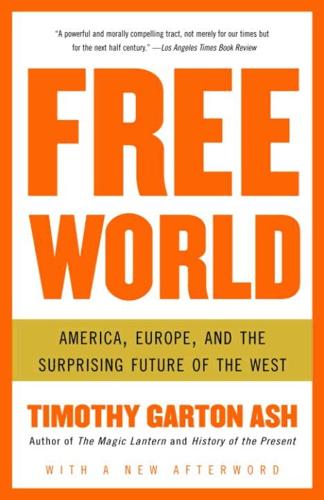
Free World: America, Europe, and the Surprising Future of the West
by
Timothy Garton Ash
Published 30 Jun 2004
But that’s a risk you always have to take, if you want to draw lessons for the future from the recent past. Accepting that we will always be surprised by what Donald Rumsfeld once called, in an unfairly derided distinction, “the unknown unknowns,” we can still say something about what he called the “known knowns” and the “known unknowns.”80 The word “probably” is to be understood next to most of the statements that follow. First among the “known knowns” is American hyperpower. This is three-dimensional. In 2002 the United States spent more on defense than did the next eighteen military powers combined.81 The imbalance can be seen clearly on the proportional map on page 235.

Green and Prosperous Land: A Blueprint for Rescuing the British Countryside
by
Dieter Helm
Published 7 Mar 2019
Over the next few decades through to mid-century, Britain faces a rising population, and rising consumption. These together mean more houses, more developments and more hard infrastructures. On a business-as-usual basis, the results will in aggregate be negative for the natural environment. It is not only the present baseline that needs to be addressed, but also the ‘known unknowns’, and resilience against the ‘unknown unknowns’ of the future. More people Britain is one of the most densely populated countries in the world, even though large areas are sparsely inhabited. There are the great conurbations, and then there are the Scottish mountains, the Pennines and mid-Wales.
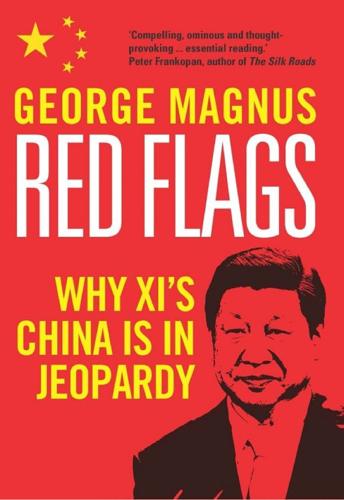
Red Flags: Why Xi's China Is in Jeopardy
by
George Magnus
Published 10 Sep 2018
China’s long history is testament both to its capability for significant achievements but also to its susceptibility to failure and shortcomings. I have examined China’s economic challenges, and in spite of what more cheerful analysts conclude, the case for a marked slowdown in economic growth that might in time become unstable is hard to refute. Two known unknowns, to cite former US Secretary of Defense Donald Rumsfeld, remain to be added to the mix. One is how China’s private sector, on which so much rests, will respond to the growing intrusion of and repression by the Party state. Uncertainty, or worse, disillusion about the economy is quite likely to manifest itself again at some point in capital flight and financial instability.
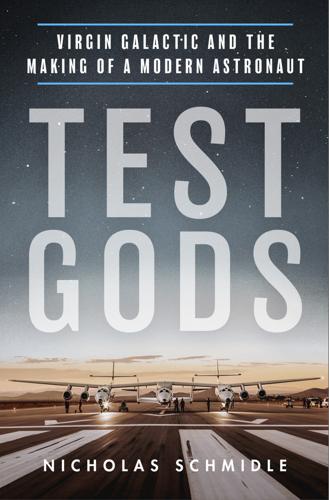
Test Gods: Virgin Galactic and the Making of a Modern Astronaut
by
Nicholas Schmidle
Published 3 May 2021
“Failure to admit mistakes is a cancer that must be nipped at the bud,” Stucky wrote. On the day before the rescheduled flight, he drove home, wondering if he had asked all the questions he should have asked. He was sure there were some out there that he didn’t know to ask—the ones that were neither the known knowns or the known unknowns but the unknown unknowns. Those were the ones “treacherously hidden” beneath the “subtleness of the sea”—the ones you didn’t know to look for. And there were hidden ones, indeed. What neither Stucky nor anyone else knew was that after some technicians had stripped a layer of thermal protection off the h-stabs, they had re-covered the surface with Kapton, a polyimide film commonly used on satellites because of its resilience under extreme temperatures.
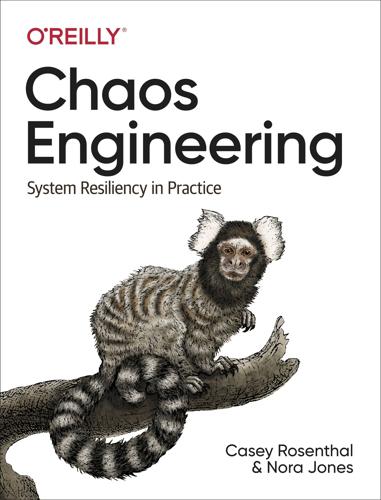
Chaos Engineering: System Resiliency in Practice
by
Casey Rosenthal
and
Nora Jones
Published 27 Apr 2020
SCE serves as a foundation for developing a learning culture around how organizations build, operate, instrument, and secure their systems. The goal of these experiments is to move security in practice from subjective assessment into objective measurement. As they do in the DevOps world, chaos experiments allow security teams to reduce the “unknown unknowns” and replace “known unknowns” with information that can drive improvements to security posture. By intentionally introducing a failure mode or other event, security teams can discover how well instrumented, observable, and measurable security systems truly are. Teams can see if security functions are working as well as everyone assumes they are, objectively assessing abilities and weaknesses, moving to stabilize the former and eliminate the latter.

MegaThreats: Ten Dangerous Trends That Imperil Our Future, and How to Survive Them
by
Nouriel Roubini
Published 17 Oct 2022
Glasgow will highly likely be the same. The term “singularity” usually describes the moment when artificial intelligence surpasses human intelligence, and (to pessimists) it’s game over for Homo sapiens. Yet a version of singularity can apply to climate change. That’s when we pass the point of no return. “There are known unknowns aplenty,” write authors Wagner and Weitzman in Climate Shock. “Unknown unknowns may yet dominate and tipping points and other nasty surprises seem to lurk around every corner. Some of them may put warming itself on overdrive.”56 In the worst case, primordial conditions will reappear. Soils will fry.
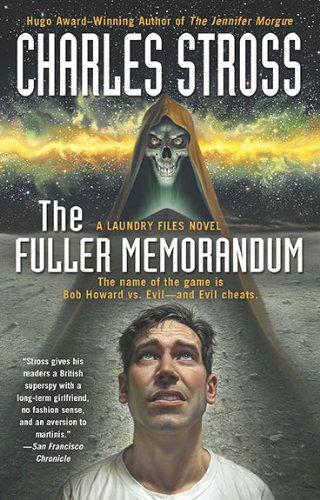
Fuller Memorandum
by
Stross, Charles
Published 14 Jan 2010
"It's not something I can ignore." "How much of CLUB ZERO are you familiar with?" "I'm not." I get the waiter's friend out and go to work on a pinot noir. "Oh." She pauses. "I'm sorry, but--are you sure you don't know?" "Don't know what?" I ask irritably as I scrape away the plastic seal on the bottle. "Are we in known unknowns territory, or unknown unknowns?" "They're known okay." She shakes her head. "Fucking cultists." "Cul--" I do a double take. "That's CLUB ZERO?" She nods. "None other." Cultists. They're like cockroaches. We humans are incredibly fine-tuned by evolution for the task of spotting coincidences and causal connections.
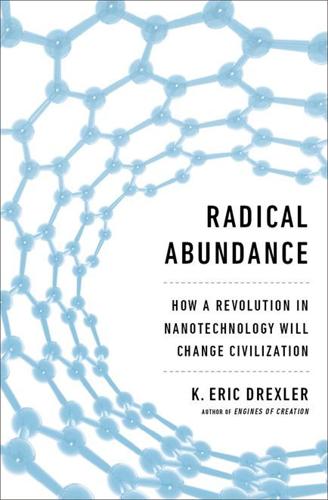
Radical Abundance: How a Revolution in Nanotechnology Will Change Civilization
by
K. Eric Drexler
Published 6 May 2013
Thus, the coming revolution of radical abundance confronts us with irreducible uncertainties that, as in financial affairs, must stand alongside positive knowledge at the center of decision making. Knowledge and uncertainty interact. Unpredictable prospects often call for hedging and contingency plans; unknowns can give rise to predictable results when known unknowns affect others’ choices. Cooperative Strategies for Avoiding Needless Risks Cooperative development can reduce unknowns, while secretive competition intentionally increases them. With fewer clashing vital interests and shared challenges of managing a turbulent economic and security transition, allowing an arms race to emerge would create a needless and incalculable risk.
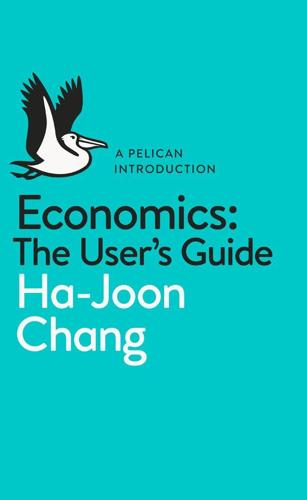
A Pelican Introduction Economics: A User's Guide
by
Ha-Joon Chang
Published 26 May 2014
The best explanation of the concept of uncertainty was given by, perhaps surprisingly, Donald Rumsfeld, the defence secretary in the first government of George W. Bush. In a press briefing regarding the situation in Afghanistan in 2002, Rumsfeld opined: ‘There are known knowns. There are things we know that we know. There are known unknowns. That is to say, there are things that we now know we don’t know. But there are also unknown unknowns. There are things we do not know we don’t know.’ The idea of ‘unknown unknowns’ nicely sums up Keynes’ concept of uncertainty. Active fiscal policy for full employment: the Keynesian solution In an uncertain world, investors may suddenly become pessimistic about the future and reduce their investments.
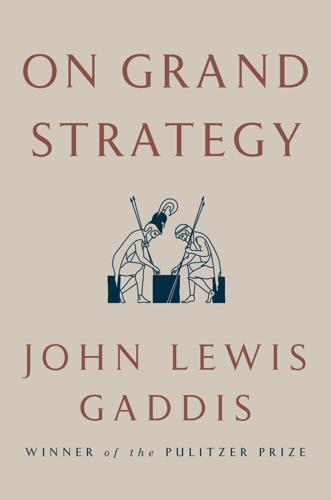
On Grand Strategy
by
John Lewis Gaddis
Published 3 Apr 2018
You then apply these to the situation at hand: that’s the role of scale. The result is a plan, informed by the past, linked to the present, for achieving some future goal. The engagement, however, won’t in all respects follow the plan. Not only will its outcome depend on what the other side does—the “known unknowns,” of which former secretary of defense Donald Rumsfeld famously spoke41—but it will also reflect “unknown unknowns,” which are all the things that can go wrong before you’ve even encountered an adversary. Together, these constitute what Clausewitz called “friction,” the collision of theory with reality about which Artabanus tried to warn Xerxes, many centuries earlier at the Hellespont.
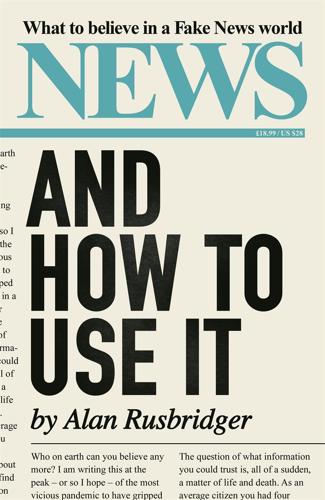
News and How to Use It: What to Believe in a Fake News World
by
Alan Rusbridger
Published 26 Nov 2020
The public tends to be highly averse to risks related to unknown unknowns: the gulf between public and scientific support for GMOs, for example, is a result of public concern for future disasters that scientists can’t predict, while scientists and policymakers are often content with evaluating known unknowns. Perhaps for the public, the real definition of an expert is someone who has dived so deep into a topic they know how much they don’t know, and are prepared to take that ignorance seriously (SEE: FOOTNOTES). F FACTS One of the most quoted aphorisms about journalism is the seven-word pronouncement of the Manchester Guardian’s longest-serving editor, C.P.
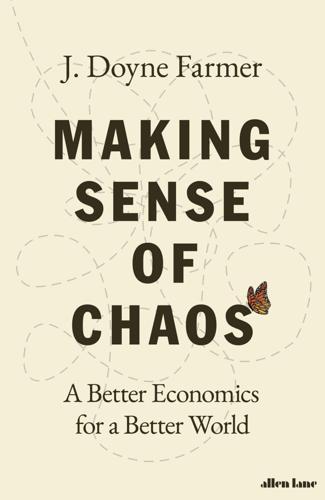
Making Sense of Chaos: A Better Economics for a Better World
by
J. Doyne Farmer
Published 24 Apr 2024
In a complexity-economics model it is more obvious if someone is cooking the books to get the answer they want. So my hope is that complexity economics can provide a more objective framework; time will tell whether this hope is realized. Uncertainty vs risk [A]s we know, there are known knowns; there are things we know we know. We also know there are known unknowns; that is to say we know there are some things we do not know. But there are also unknown unknowns – the ones we don’t know we don’t know. [They] tend to be the difficult ones. Donald Rumsfeld (2002)18 In 1921, the economist Frank Knight, who would go on to be a co-founder of the Chicago school but was at that time at the University of Iowa, was the first to make a clear distinction between risk and uncertainty.19 By risk he meant situations where we know the set of possible future events and their probabilities.
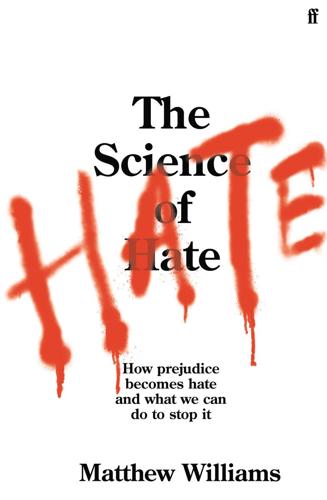
The Science of Hate: How Prejudice Becomes Hate and What We Can Do to Stop It
by
Matthew Williams
Published 23 Mar 2021
While the chances are likely to be low, we will find such an example out there if we look hard enough. Paul Joseph Franklin had many of the ingredients identified by scientists, but David Copeland seemed to have few, if any. Both committed horrendous hate crimes. There is no getting away from the reality that predicting the behaviour of individuals is an imprecise science, full of known unknowns, and unknown unknowns. This is why the use of predictive technologies in policing and criminal justice is so controversial. They are not accurate enough at the individual level to tell us where the next crime will be committed, and by whom. Where predictions are made, they are often no better than a fifty–fifty guess, resulting in cases of injustice.
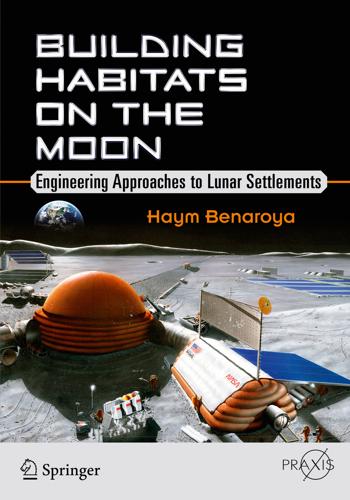
Building Habitats on the Moon: Engineering Approaches to Lunar Settlements
by
Haym Benaroya
Published 12 Jan 2018
The important point to note from the Aloha failure is that while laboratory testing is crucial in the development of complex technologies, real world testing is as important. Even so, unique situations can still result in failures because of our lack of fundamental understanding of something critical. There are known knowns, known unknowns, and unknown unknowns. The last category can lead to accidents that are essentially blameless because these accidents are resident in a part of the domain that we do not know exists. Perhaps a distinction can be made between the unexpected (because it is an unknown unknown) and the unpredictable (because it is an event of very small probability , with almost no data to define its rate of occurrence).
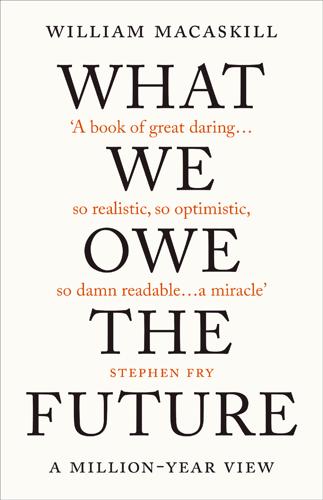
What We Owe the Future: A Million-Year View
by
William MacAskill
Published 31 Aug 2022
Thus I can say with some confidence that there is very little consensus on which intermediate goals are net-positive to pursue.”6 The second reason why we face such deep uncertainty is that, as well as weighing competing considerations we’re aware of, we also need to try to take into account the considerations we haven’t yet thought of. In 2002, when talking about the lack of evidence of Iraqi weapons of mass destruction, US Secretary of Defense Donald Rumsfeld declared, “There are known knowns; there are things we know we know. We also know there are known unknowns; that is to say we know there are some things we do not know. But there are also unknown unknowns—the ones we don’t know we don’t know.”7 Rumsfeld’s comment was lampooned as obscurantism at the time, and it even earned a Foot in Mouth Award, which the Plain English Campaign bestows each year for “a baffling comment by a public figure.”8 But he was actually making an important philosophical point: we should bear in mind there may be considerations that we aren’t even aware of.

More Everything Forever: AI Overlords, Space Empires, and Silicon Valley's Crusade to Control the Fate of Humanity
by
Adam Becker
Published 14 Jun 2025
And then there are the glial cells, which are at least as numerous in the brain as neurons, and which play their own important role in the brain’s operation.94 It’s entirely likely that Kurzweil’s upper bounds on the brain’s computational power and memory capacity are too low by many orders of magnitude. Indeed, a 2008 study coauthored by Nick Bostrom suggested that the computational power of the brain could easily be ten million times greater than Kurzweil’s upper bound.95 “There’s a lot of unknown unknowns and known unknowns about what information you actually need out of a brain to make something that would be enough like a person” to simulate a human brain on a computer, says Michael Hendricks, a neurobiologist at McGill University. “Synapses vary in all kinds of different ways from each other, neurons can be in all kinds of different states, depending on ion channel composition and what genes are expressing.
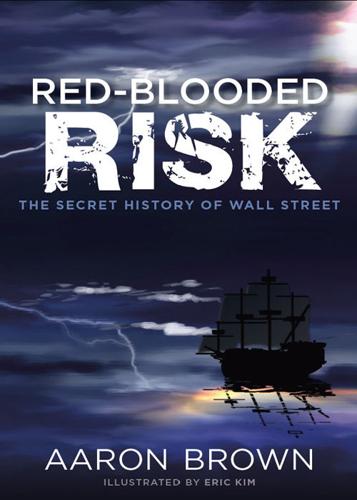
Red-Blooded Risk: The Secret History of Wall Street
by
Aaron Brown
and
Eric Kim
Published 10 Oct 2011
Fifty years before that, the Marquis de Condorcet wanted facilité (facility) and motif de croire (reason to believe). Rudolph Carnap came up with the uber-geeky “probability1” and “probability2” and also “statistical” and “inductive” probability. In the early twentieth century “propensity” and “proclivity” were used, and in the early twenty-first Donald Rumsfeld highlighted the distinction again with “known unknowns” versus “unknown unknowns.” Not all of these authors distinguished frequency and degree of belief in the same way, but all agreed there were two types of probability. As you may recall from Chapter 1, to this day there are two opposed branches of theoretical statistics, frequentists or classical statisticians, whose fundamental definition of probability rests on repeatable experiments, and Bayesians, whose foundation is subjective degree of belief.
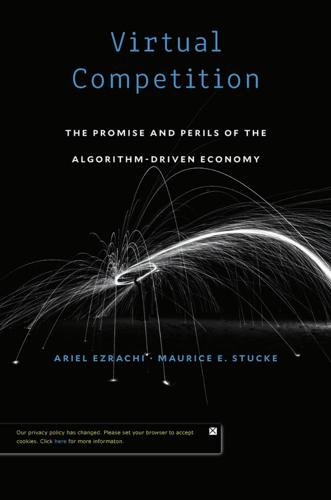
Virtual Competition
by
Ariel Ezrachi
and
Maurice E. Stucke
Published 30 Nov 2016
The firm may not know exactly how its pricing algorithm derived a particular price for a particular customer (see Chapters 7 and 8), but the firm does know the algorithm’s ultimate strategy (namely to increase profits by better discrimination). The firm, unlike its customers, also knows the magnitude of the price disparity among the various consumer categories. We, on the other hand, are in the dark on this data-driven behavioral discrimination. The list of “known unknowns” is troubling. In many jurisdictions, including the United States, we do not know: • • • • • • • • who has been collecting data on us; the uses to which our personal data will be put; the other potential recipients of our personal data; the nature of the personal data collected about us; the categories in which we are placed; the means by which our personal data is collected; the quality of the data (and inferences made about our likely behavior); and what, if any, options we have to control how the data is used.
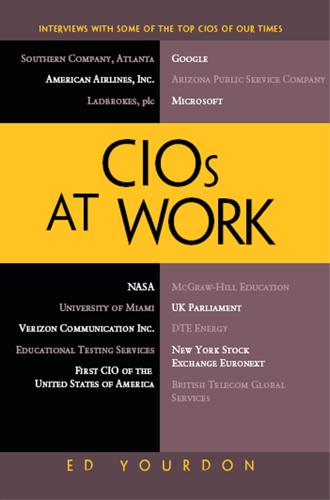
CIOs at Work
by
Ed Yourdon
Published 19 Jul 2011
And then there are things you don’t know and I don’t know. That’s what worries me. Yourdon: Okay, that’s what Donald Rumsfeld called the “unknown unknowns.” Bohlen: Yes. Yourdon: We used to have a lot of conversations about that sort of thing when we were planning for Y2K ten years ago. There are the known knowns and the known unknowns and so on. Okay, so you’re concerned about the things we’re not even aware that we should be worrying about. Bohlen: It primarily comes from my work in the Department of Defense days, and you’re familiar with the war games. But there are some people out there trying to destroy our way of life.

Data and Goliath: The Hidden Battles to Collect Your Data and Control Your World
by
Bruce Schneier
Published 2 Mar 2015
Serge Egelman, Cormac Herley, and Paul C. van Oorschot (9-12 Sep 2013), “Markets for zero-day exploits: Ethics and implications,” New Security Paradigms Workshop, Banff, Alberta, Canada, http://www.nspw.org/papers/2013/nspw2013-egelman.pdf. a robust market in zero-days: Stefan Frei (5 Dec 2013), “The known unknowns: Empirical analysis of publicly-unknown security vulnerabilities,” NSS Labs, https://www.nsslabs.com/system/files/public-report/files/The%20Known%20Unknowns_1.pdf. both governments and: Andy Greenberg (21 Mar 2012), “Meet the hackers who sell spies the tools to crack your PC (and get paid six-figure fees),” Forbes, http://www.forbes.com/sites/andygreenberg/2012/03/21/meet-the-hackers-who-sell-spies-the-tools-to-crack-your-pc-and-get-paid-six-figure-fees.
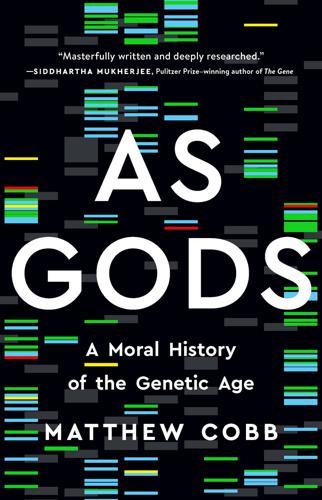
As Gods: A Moral History of the Genetic Age
by
Matthew Cobb
Published 15 Nov 2022
✴ The Asilomar meeting called on the NIH – the main US federal funder of molecular biological research – to introduce safety guidelines for research that it financed (the private sector could carry on doing what it wanted). A major difficulty faced by the NIH was that this involved estimating the risks associated with different kinds of experiments – but as Jim Watson had heckled at Asilomar: ‘We can’t even measure the fucking risks!’2 The risks were, at best, known unknowns, and probably unknown unknowns. The same fundamental difficulty applied to the search for practical solutions. DeWitt Stetten, an NIH administrator heavily involved in developing the guidelines, explained the messy business to a colleague: Conclusions which must be reached cannot be reached by scientific judgements alone.
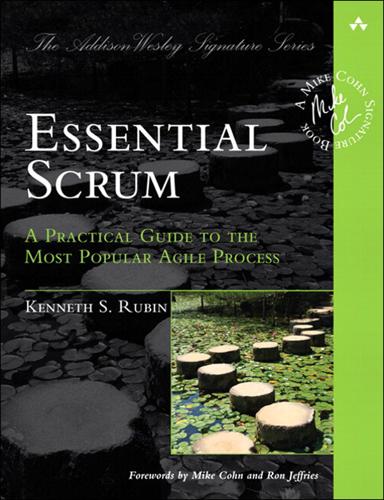
Essential Scrum: A Practical Guide to the Most Popular Agile Process
by
Kenneth S. Rubin
Published 19 Jul 2012
) • A description of the other important assumptions (hypotheses) about the potential users and feature set that the first product release is supposed to test • The few key, actionable measures used to test the other assumptions and to learn whether the initial release of SR4U is meeting expectations • List of questions (known unknowns) that need to be addressed Without this information, senior management would not have sufficient confidence to make an informed decision as to whether or not to move forward with the initial development. Visioning The first thing Roger and the stakeholders do is to create a shared, compelling vision for SR4U.
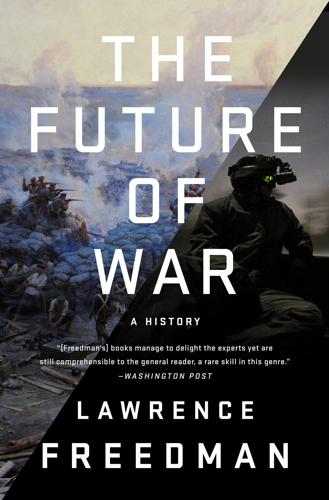
The Future of War
by
Lawrence Freedman
Published 9 Oct 2017
Offending regimes were toppled, first in Afghanistan and then in Iraq, after the opportunity was taken in 2003 to overthrow Saddam Hussein. [ 17 ] From Counter-Terrorism to Counter-Insurgency Reports that say that something hasn’t happened are always interesting to me, because as we know, there are known knowns; there are things we know we know. We also know there are known unknowns; that is to say we know there are some things we do not know. But there are also unknown unknowns—the ones we don’t know we don’t know. And if one looks throughout the history of our country and other free countries, it is the latter category that tend to be the difficult ones. US SECRETARY OF DEFENSE DONALD RUMSFELD, February 20021 When the US invaded Afghanistan and Iraq it did so with equipment that had been conceptualised during the Vietnam era but with a great-power war still most in mind.
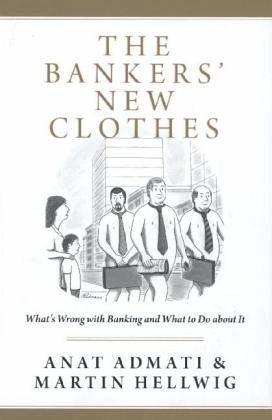
The Bankers' New Clothes: What's Wrong With Banking and What to Do About It
by
Anat Admati
and
Martin Hellwig
Published 15 Feb 2013
Quantitative models and so-called stress tests are said to provide precise and reliable assessments of risks and a basis for reducing risks by sophisticated techniques using derivatives.49 These claims should not be taken at face value. Although bankers might be experts at analyzing and managing risks, they often come across risks that they have not anticipated.50 As former U.S. Defense Secretary Donald Rumsfeld famously said: “There are known unknowns; that is to say there are things that we now know we don’t know. But there are also unknown unknowns; there are things we do not know we don’t know.” For example, people at LTCM, some of the most sophisticated minds in finance, had carefully calculated the risks of different movements that various interest rates might take, but they had not thought of the possibility that market investors might become more apprehensive about risks altogether so that the values of all debt securities except for the safest U.S. government bonds would go down.

The Alignment Problem: Machine Learning and Human Values
by
Brian Christian
Published 5 Oct 2020
In his Presidential Address to his colleagues at the annual Association for the Advancement of Artificial Intelligence (AAAI) conference, Dietterich discussed the history of the field of AI as having proceeded, in the latter half of the twentieth century, from work on “known knowns”—deduction and planning—to “known unknowns”—causality, inference, and probability. “Well, what about the unknown unknowns?” he said to the auditorium, throwing down a kind of gauntlet. “I think this is now the natural step forward in our field.”10 KNOWING WHEN YOU DON’T KNOW Leave exceptional cases to show themselves, let their qualities be tested and confirmed, before special methods are adopted.

The Better Angels of Our Nature: Why Violence Has Declined
by
Steven Pinker
Published 24 Sep 2012
Since the state of the environment is at most one ingredient in a mixture that depends far more on political and social organization, resource wars are far from inevitable, even in a climate-changed world. No reasonable person would prophesy that the New Peace is going to be a long peace, to say nothing of a perpetual peace. There will certainly be wars and terrorist attacks in the decades to come, possibly large ones. On top of the known unknowns—militant Islamism, nuclear terrorists, environmental degradation—there are surely many unknown unknowns. Perhaps new leaders in China will decide to engulf Taiwan once and for all, or Russia will swallow a former Soviet republic or two, provoking an American response. Maybe an aggressive Chavismo will spill out of Venezuela and incite Marxist insurgencies and brutal counterinsurgencies throughout the developing world.
…
The political scientist Karen Alter conducted an analysis before the war broke out showing that the Bush administration was unusually closed in its decision-making process.95 In a textbook illustration of the phenomenon of groupthink, the prewar policy team believed in its own infallibility and virtue, shut out contradictory assessments, enforced consensus, and self-censored private doubts.96 Just before the Iraq War, Defense Secretary Donald Rumsfeld observed, There are known knowns; there are things we know we know. We also know there are known unknowns; that is to say we know there are some things we do not know. But there are also unknown unknowns—the ones we don’t know we don’t know. Johnson, following a remark by the philosopher Slavoj Žižek, notes that Rumsfeld omitted a crucial fourth category, the unknown knowns—things that are known, or at least could be known, but are ignored or suppressed.

Never Bet Against Occam: Mast Cell Activation Disease and the Modern Epidemics of Chronic Illness and Medical Complexity
by
Lawrence B. Afrin M. D.
,
Kendra Neilsen Myles
and
Kristi Posival
Published 15 Jan 2016
Until then, it will continue to be the case – thanks largely to the Internet – that many patients will figure out they might have MCAS long before their physicians will figure it out, and it will simply require patients to persist in their search for physicians who are willing to listen and take the time and make the effort needed to help their patients get to a diagnosis and then effective therapy. Chapter 27: The Rumsfeldian Research Needs in MCAS The Known Knowns, Known Unknowns, and Unknown Unknowns Oh, man, how does one start this sort of a chapter? The research needs in this area are enough to occupy an army of researchers for centuries. To start with, we need to identify “improved” techniques for diagnosis. If the ultimate objective is to improve the lot of the patients who have this, they’ll need to be treated, but you can’t (sensibly) treat what you haven’t (accurately) diagnosed, so improving diagnosis is paramount.
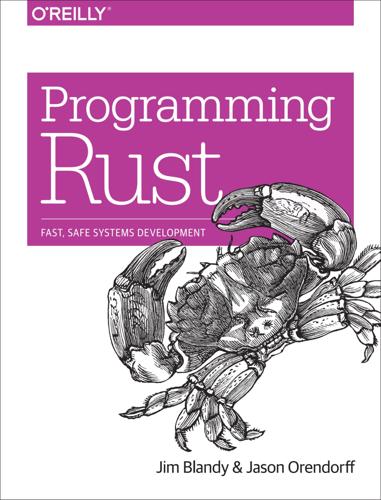
Programming Rust: Fast, Safe Systems Development
by
Jim Blandy
and
Jason Orendorff
Published 21 Nov 2017
slice.starts_with(pattern) and slice.ends_with(pattern) return true if slice’s initial or final text matches pattern: assert!("2017".starts_with(char::is_numeric)); slice.find(pattern) and slice.rfind(pattern) return Some(i) if slice contains a match for pattern, where i is the byte offset at which the pattern appears. The find method returns the first match, rfind the last: let quip = "We also know there are known unknowns"; assert_eq!(quip.find("know"), Some(8)); assert_eq!(quip.rfind("know"), Some(31)); assert_eq!(quip.find("ya know"), None); assert_eq!(quip.rfind(char::is_uppercase), Some(0)); slice.replace(pattern, replacement) returns a new String formed by replacing all matches for pattern with replacement: assert_eq!

This Is How They Tell Me the World Ends: The Cyberweapons Arms Race
by
Nicole Perlroth
Published 9 Feb 2021
The NSA’s $25.1 million new line item for zero-days was sourced from Brian Fung’s August 2013 Washington Post article, sourced from a Snowden leak of the Pentagon’s Black Budget. The estimate concerning how many zero-days the agency could purchase with those funds was sourced from Stefan Frei’s 2013 analysis for NSS Labs, “The Known Unknowns: Empirical Analysis of Publicly Known Security Vulnerabilities.” My colleague Scott Shane and I detailed the tax the Snowden leaks had on NSA morale for the Times, but they were also covered in a January 2, 2018, article by Ellen Nakashima and Aaron Gregg for the Washington Post, “NSA’s Top Talent Is Leaving Because of Low Pay, Slumping Morale and Unpopular Reorganization.”

The Power Law: Venture Capital and the Making of the New Future
by
Sebastian Mallaby
Published 1 Feb 2022
They were investing in human founders with human combinations of brilliance and weakness. They were dealing with products and manufacturing processes that were untested and complex; they faced competitors whose behaviors could not be forecast; they were investing over long horizons. In consequence, quantifiable risks were multiplied by unquantifiable uncertainties; there were known unknowns and unknown unknowns; the bracing unpredictability of life could not be masked by neat financial models. Of course, in this environment, luck played its part. Kleiner Perkins lost money on six of the fourteen investments in its first fund. Its methods were not as fail-safe as Tandem’s computers.

The Stack: On Software and Sovereignty
by
Benjamin H. Bratton
Published 19 Feb 2016
The ecological crisis will likely necessitate the formulation of new scales of bioregional jurisdiction (both smaller and larger than a state), new modes of calculating energy (quantifying, computing, distributing, visualizing a polity of electrons), and new forms of networked geopolitics (that can represent both urban megasettlements as well several hundred million migrants with equal representational facility). States and sovereignty as we know them may be ill-suited to these tasks, and so the option may prove to be, quite literally, adapt or die. And these are just the problems we know, the known-unknowns. The project to be taken up sees politics as infrastructure, systems as law, totalities as site condition, supply chains as ecologies, and energy as money. Each of these, and each layer of The Stack drawn from them, is a unique but dependent logic of design and governance. Most of the unfamiliar questions arise from problems that cannot be answered in isolation and cannot be properly addressed by extrapolating and extruding familiar models from past modern eras or by presuming that the past is actually in the past (despite the earnest protestations of some who would say they can).14 What maps, what media of exchange and equivalence, what agency of synthetic objects, which currencies for ecological economics, what ethical appetite of risk or promiscuity, what bargains with violence are necessary?
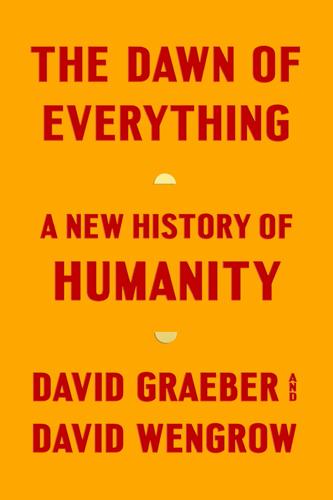
The Dawn of Everything: A New History of Humanity
by
David Graeber
and
David Wengrow
Published 18 Oct 2021
The superstructures were of softer mud-brick, often missed or unwittingly destroyed in the course of rapid digging; while the upper storeys of large civic structures were originally of fine timber, rotted or removed for reuse in antiquity. What seems in plan to be a single phase of urban construction is, in reality, a false composite made up of different elements from various periods of the city’s history – a city inhabited for over 500 years.88 All of which leaves us with plenty of known unknowns, including the city’s size or population (recent estimates suggest up to 40,000 residents, but really we can only guess).89 It’s not even clear where to draw the city boundaries. Some scholars include only the immediately visible areas of the planned Lower Town and the Upper Citadel as part of the city proper, yielding a total area of 100 hectares.

She Has Her Mother's Laugh
by
Carl Zimmer
Published 29 May 2018
Current Anthropology 51:7–17. Boyd, Robert. 2017. A Different Kind of Animal: How Culture Transformed Our Species. Princeton: Princeton University Press. Brandt, Guido, Anna Szécsényi-Nagy, Christina Roth, Kurt Werner Alt, and Wolfgang Haak. 2015. “Human Paleogenetics of Europe—The Known Knowns and the Known Unknowns.” Journal of Human Evolution 79:73–92. Breton, Sophie, and Donald T. Stewart. 2015. “Atypical Mitochondrial Inheritance Patterns in Eukaryotes.” Genome 58:423–31. Bright, Monika, and Silvia Bulgheresi. 2010. “A Complex Journey: Transmission of Microbial Symbionts.” Nature Reviews Microbiology 8:218–30.

Artificial Intelligence: A Modern Approach
by
Stuart Russell
and
Peter Norvig
Published 14 Jul 2019
An arrow from the actuators points to the block labeled, Environment, which is outside the agent block. An arrow from the environment block points to the sensors in the agent block. An arrow from the sensors points back to the first block. Figure 2.6Examples of task environments and their characteristics. We have not included a “known/unknown” column because, as explained earlier, this is not strictly a property of the environment. For some environments, such as chess and poker, it is quite easy to supply the agent with full knowledge of the rules, but it is nonetheless interesting to consider how an agent might learn to play these games without such knowledge.